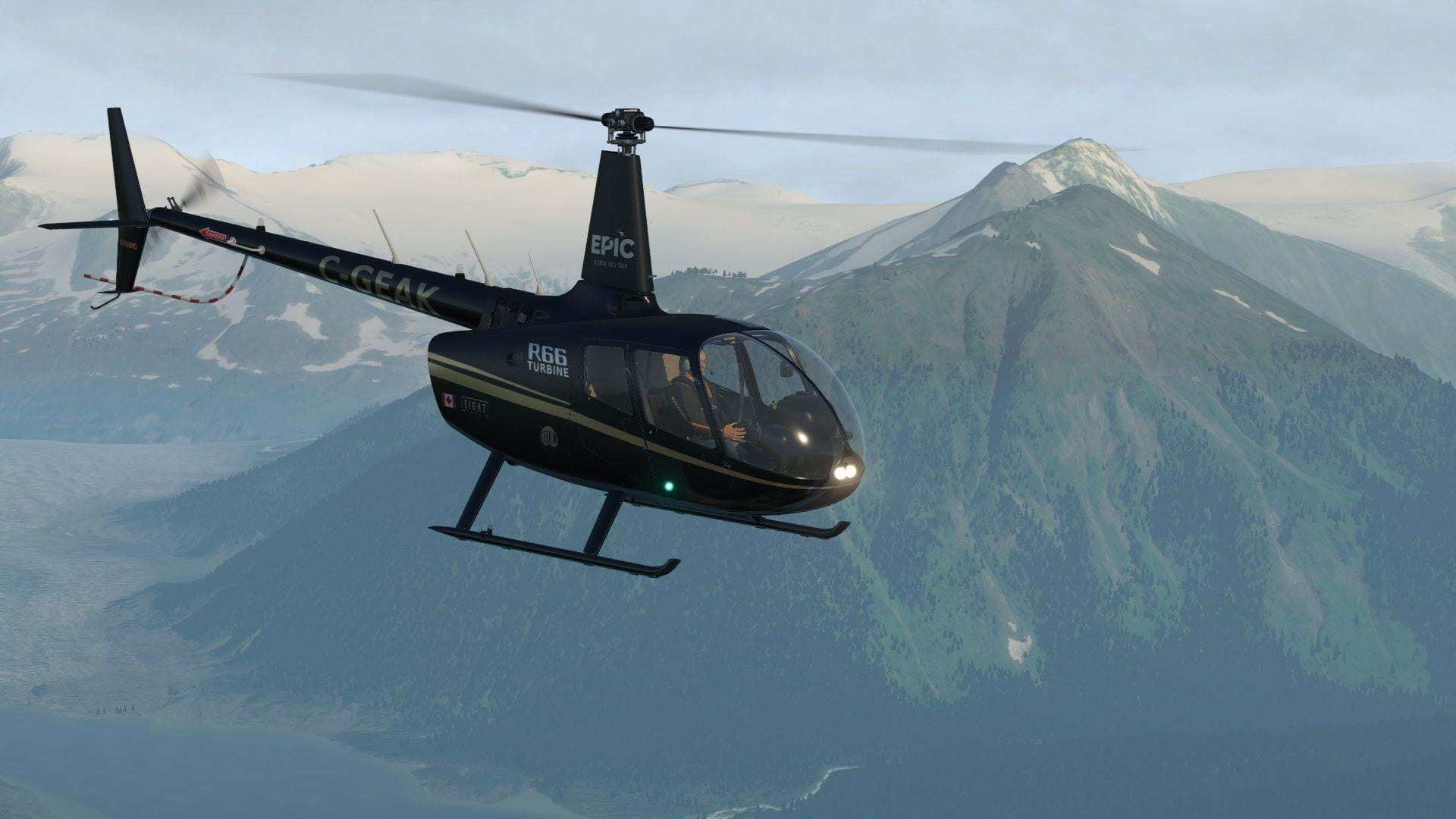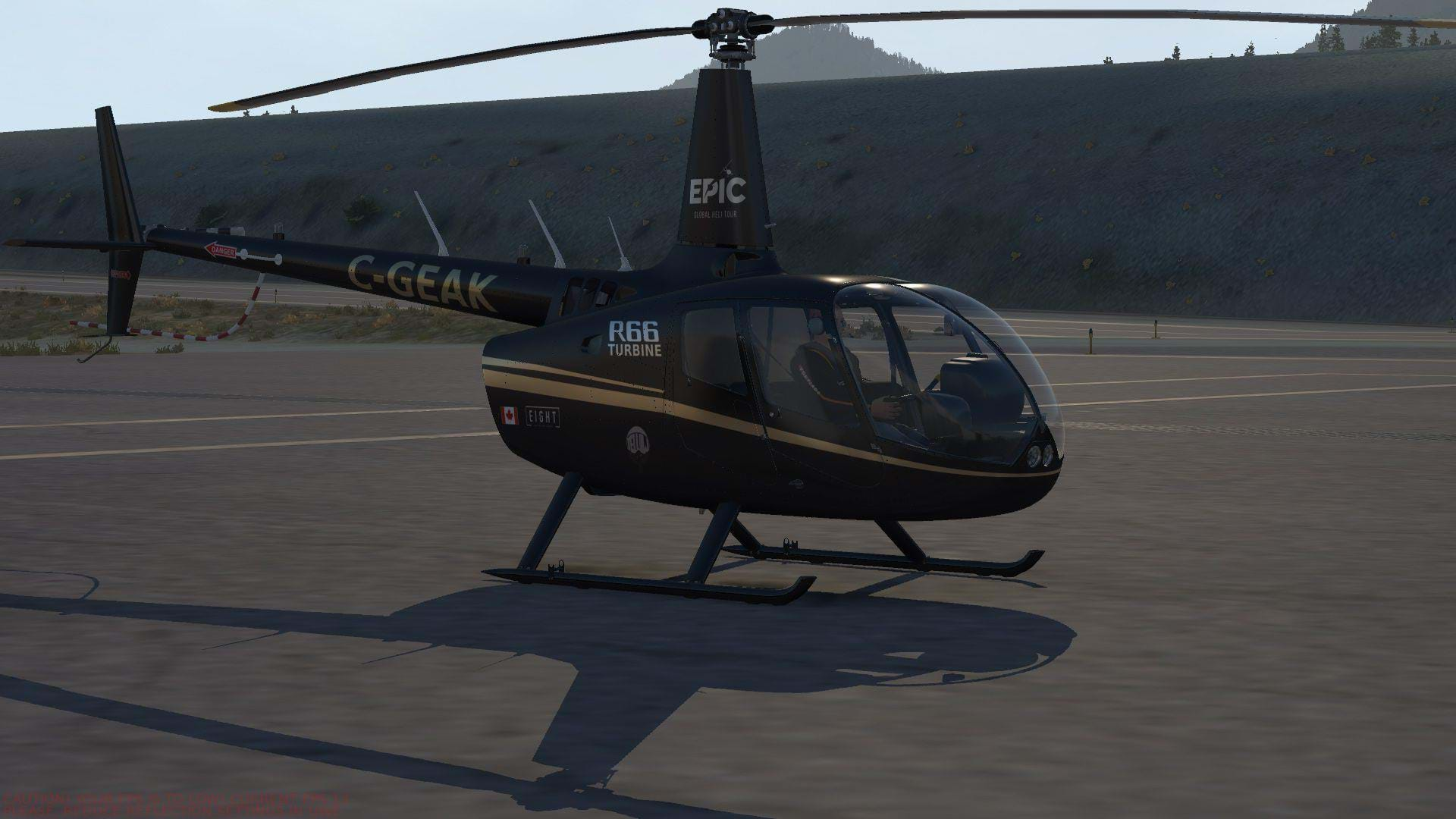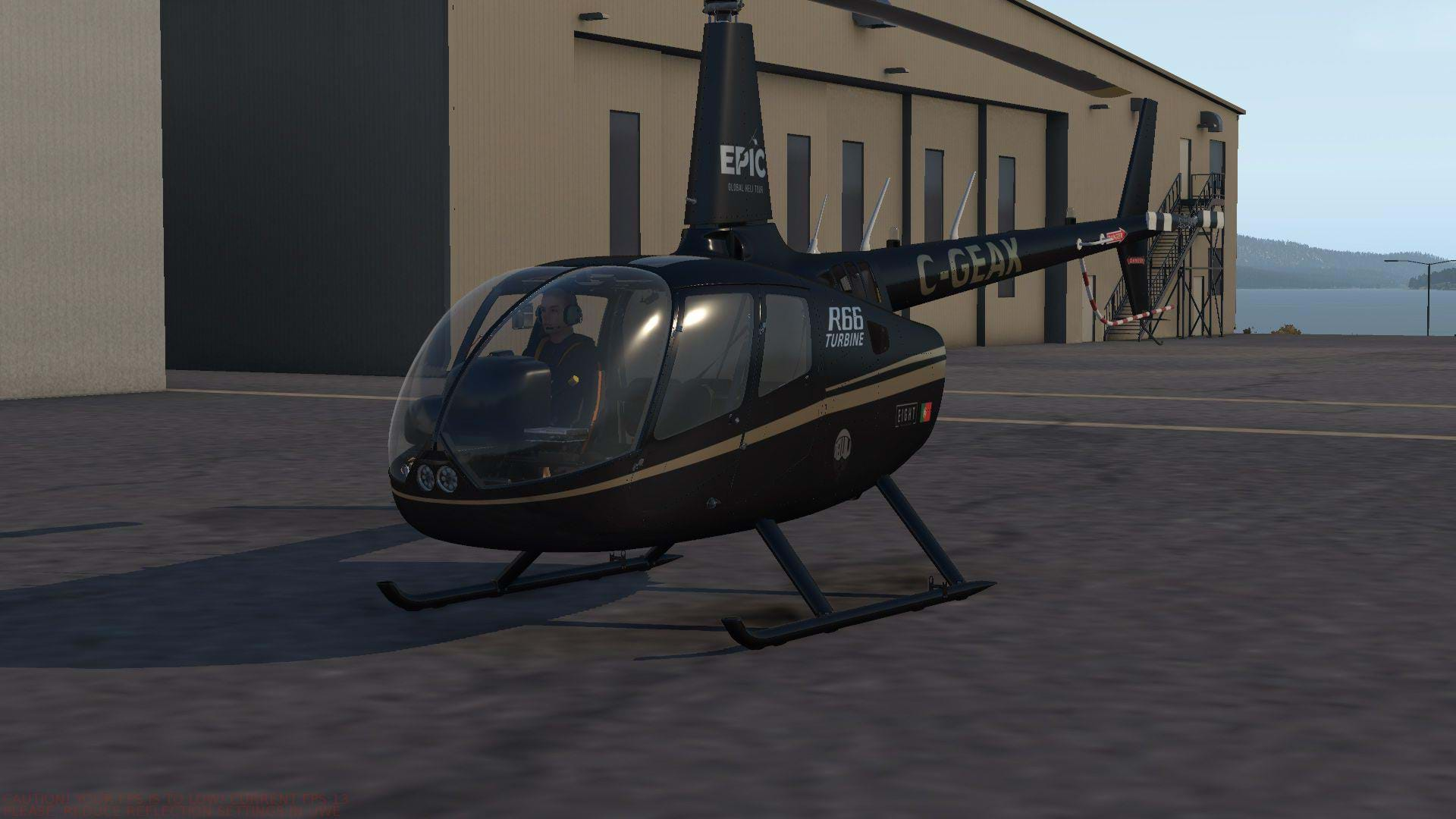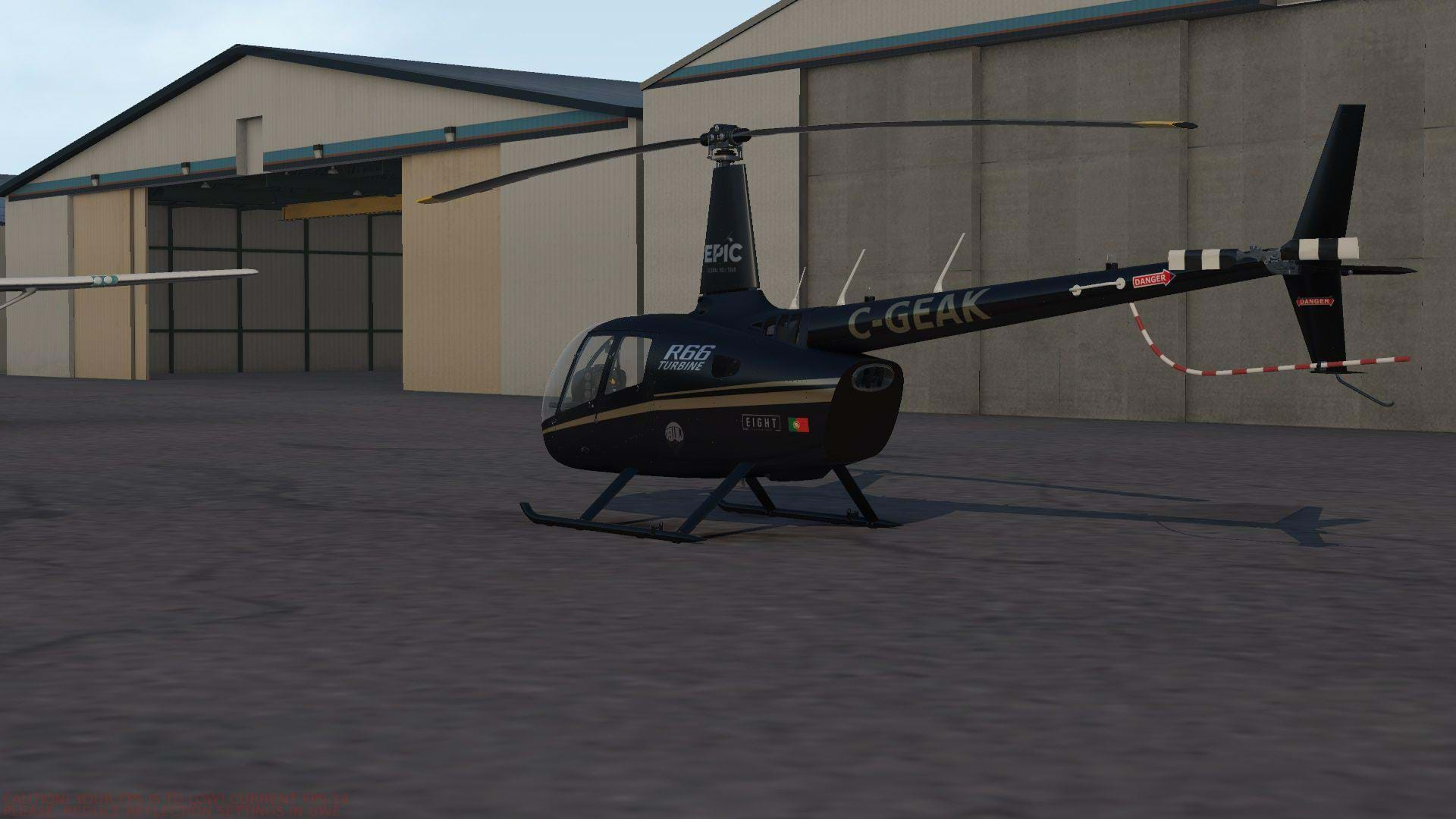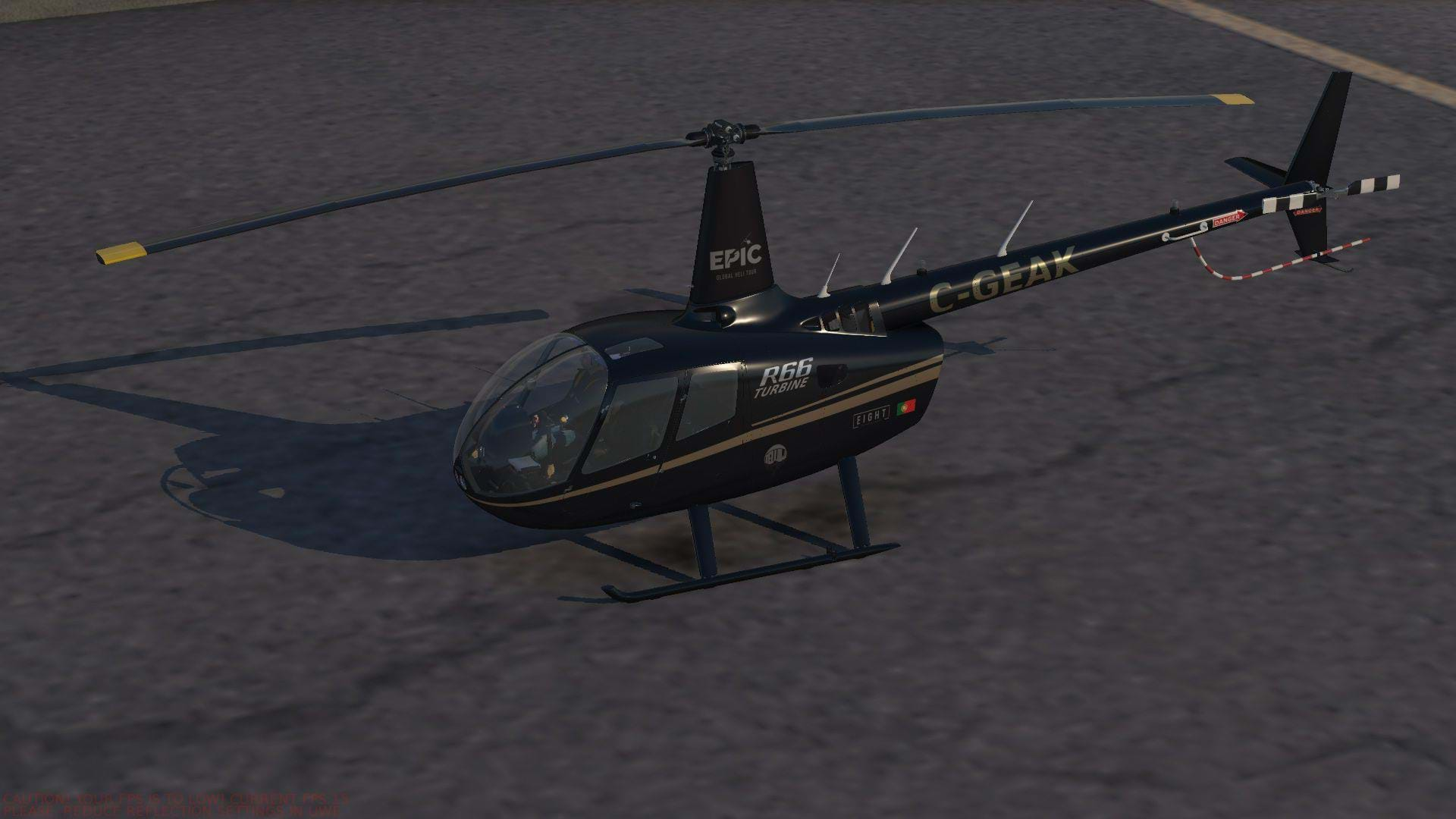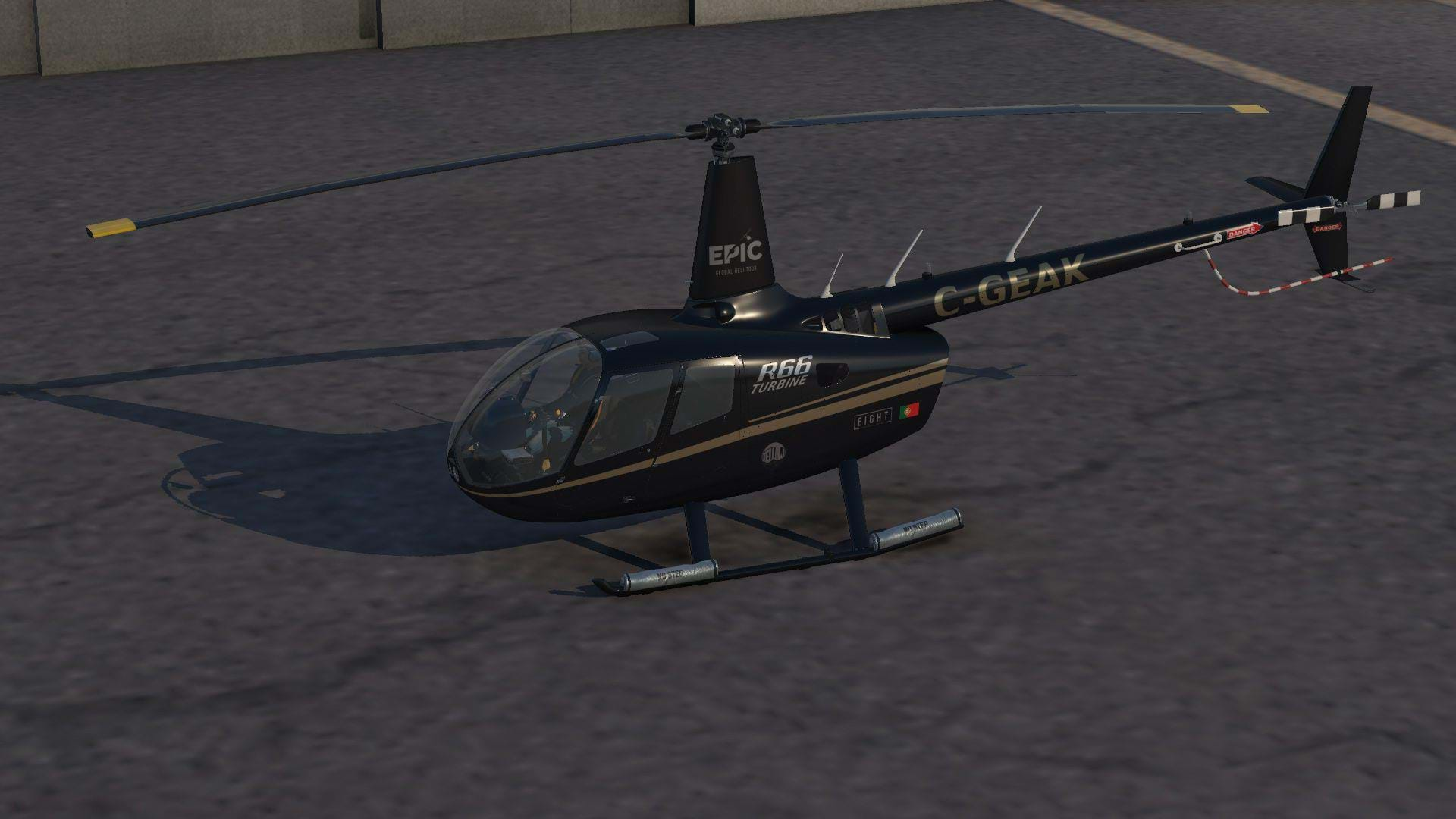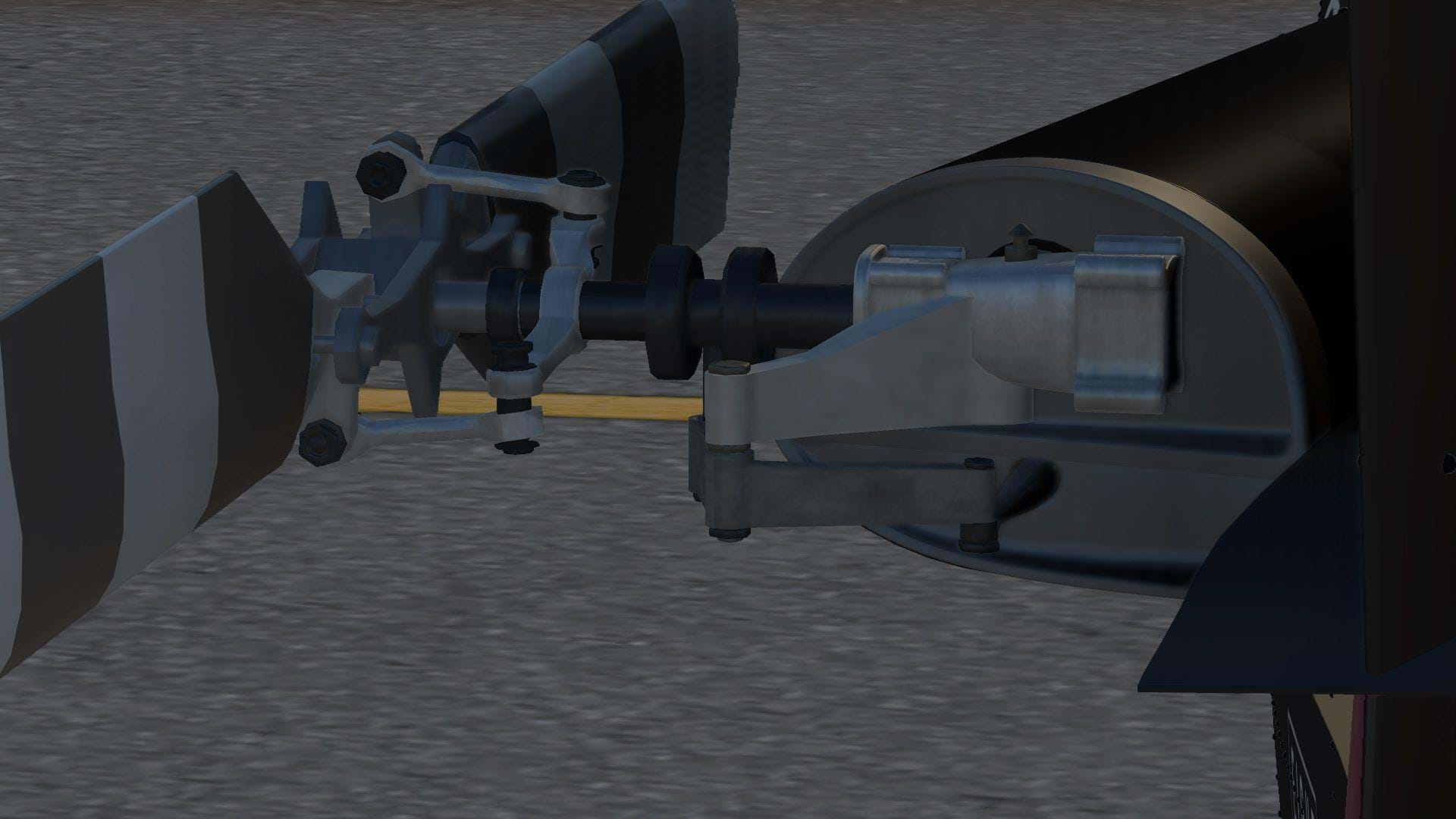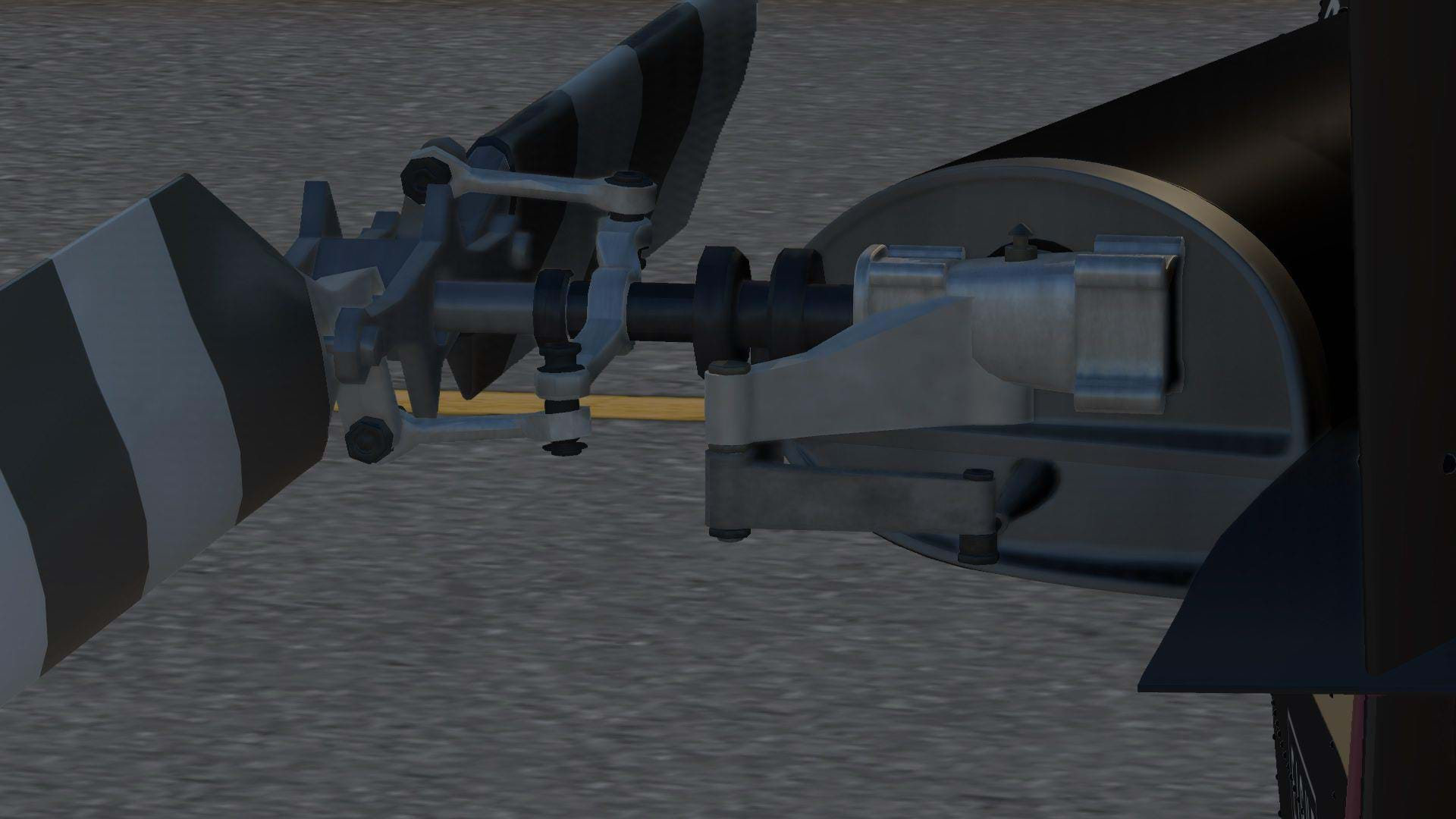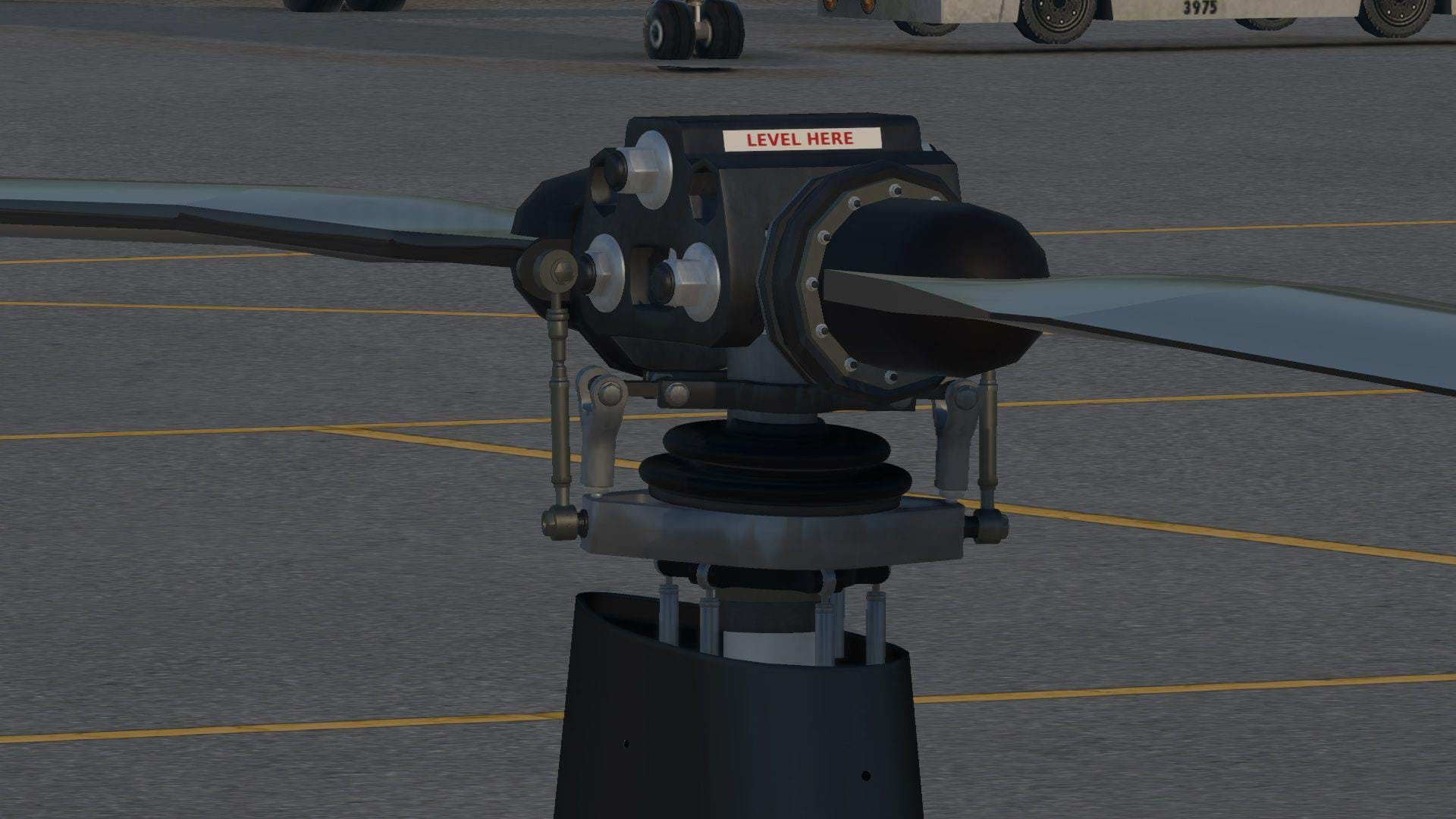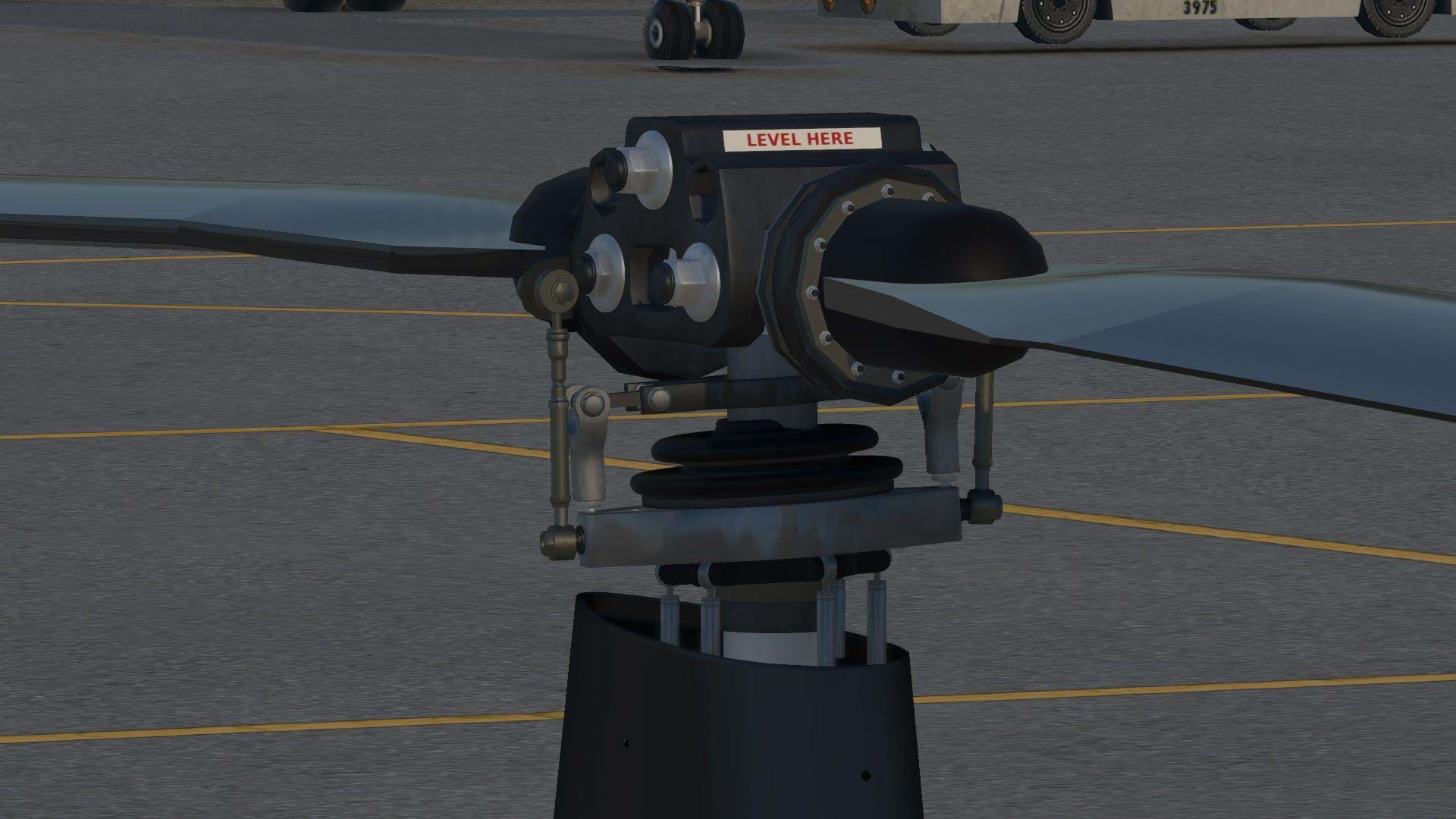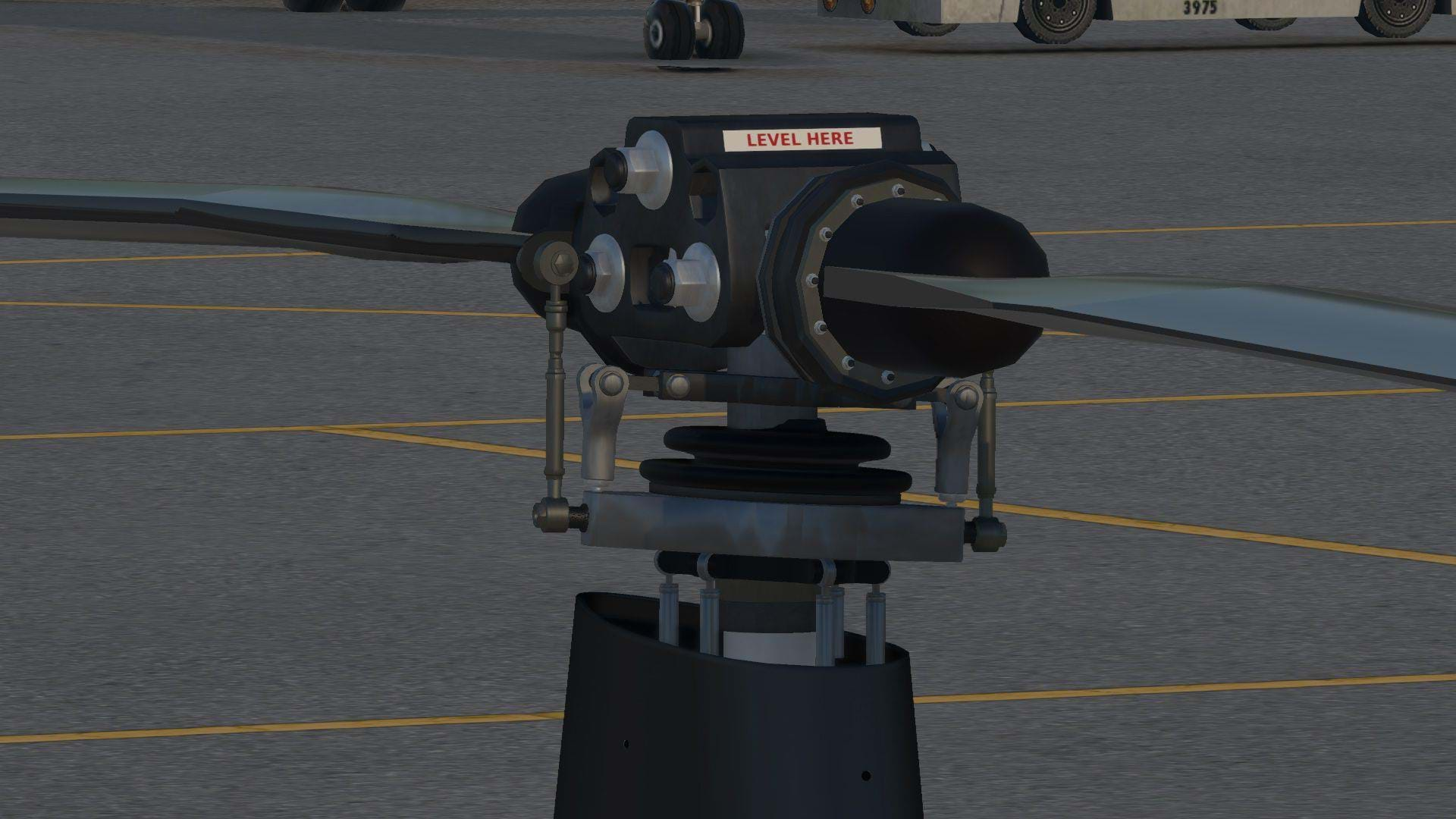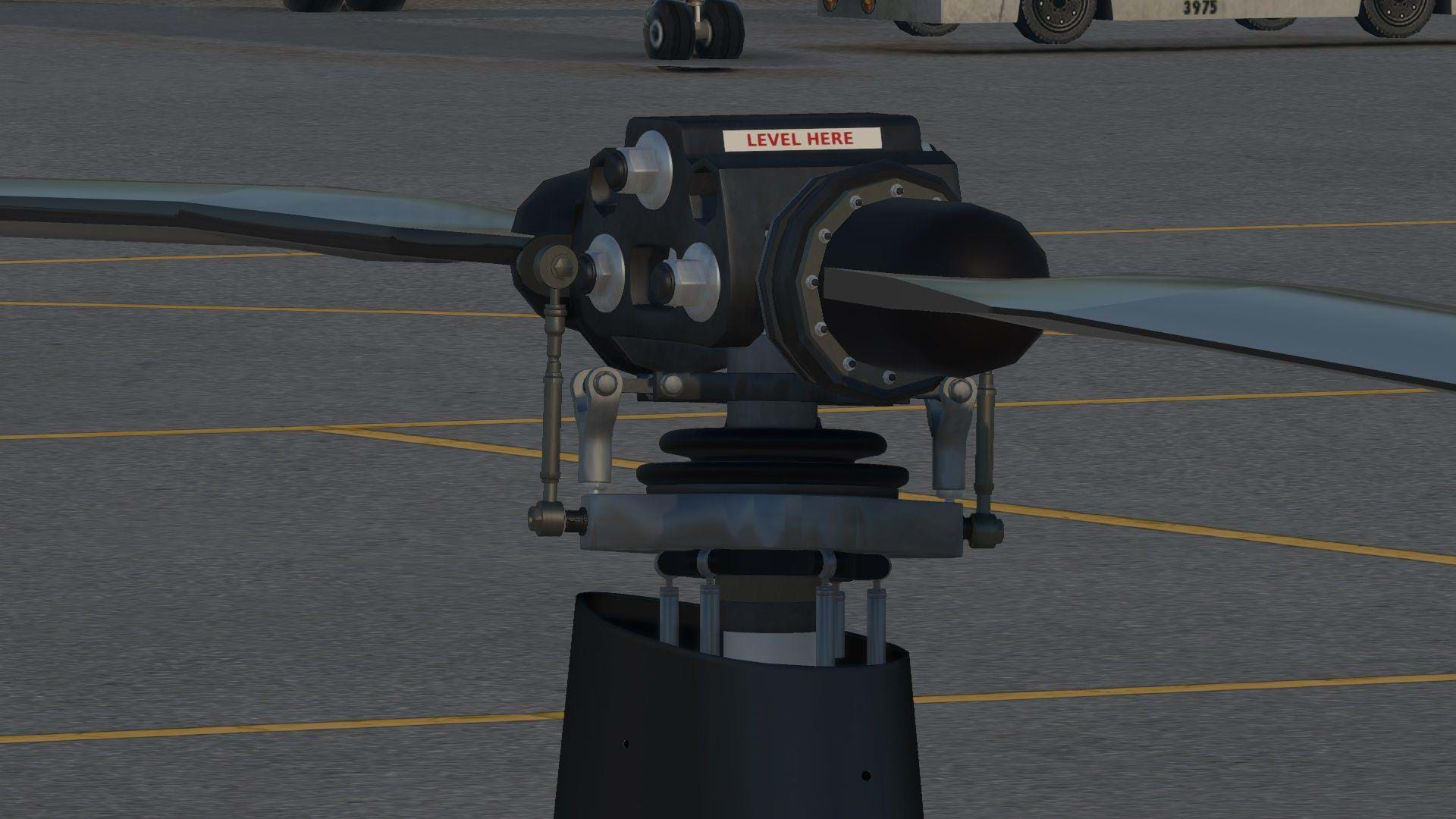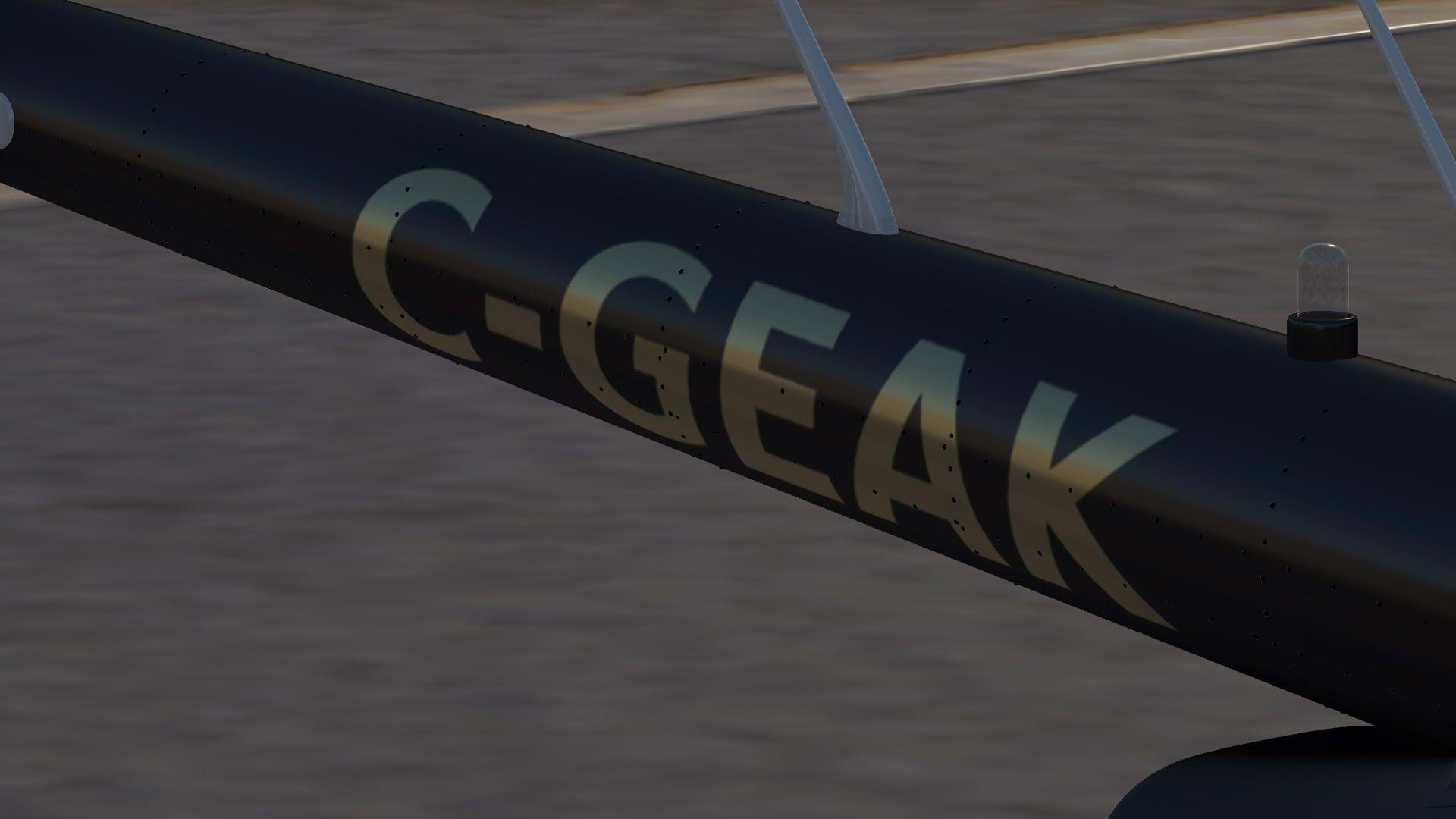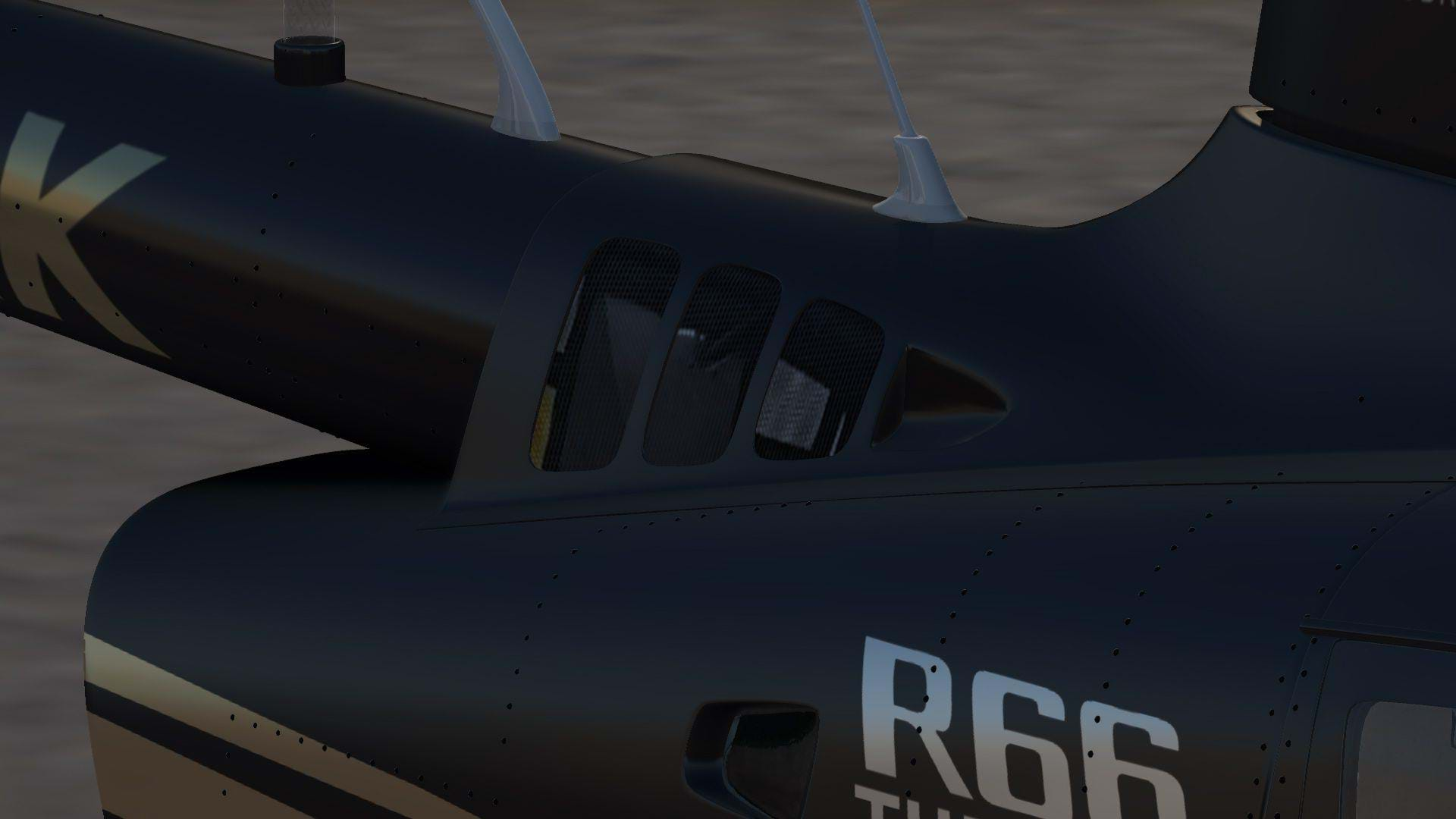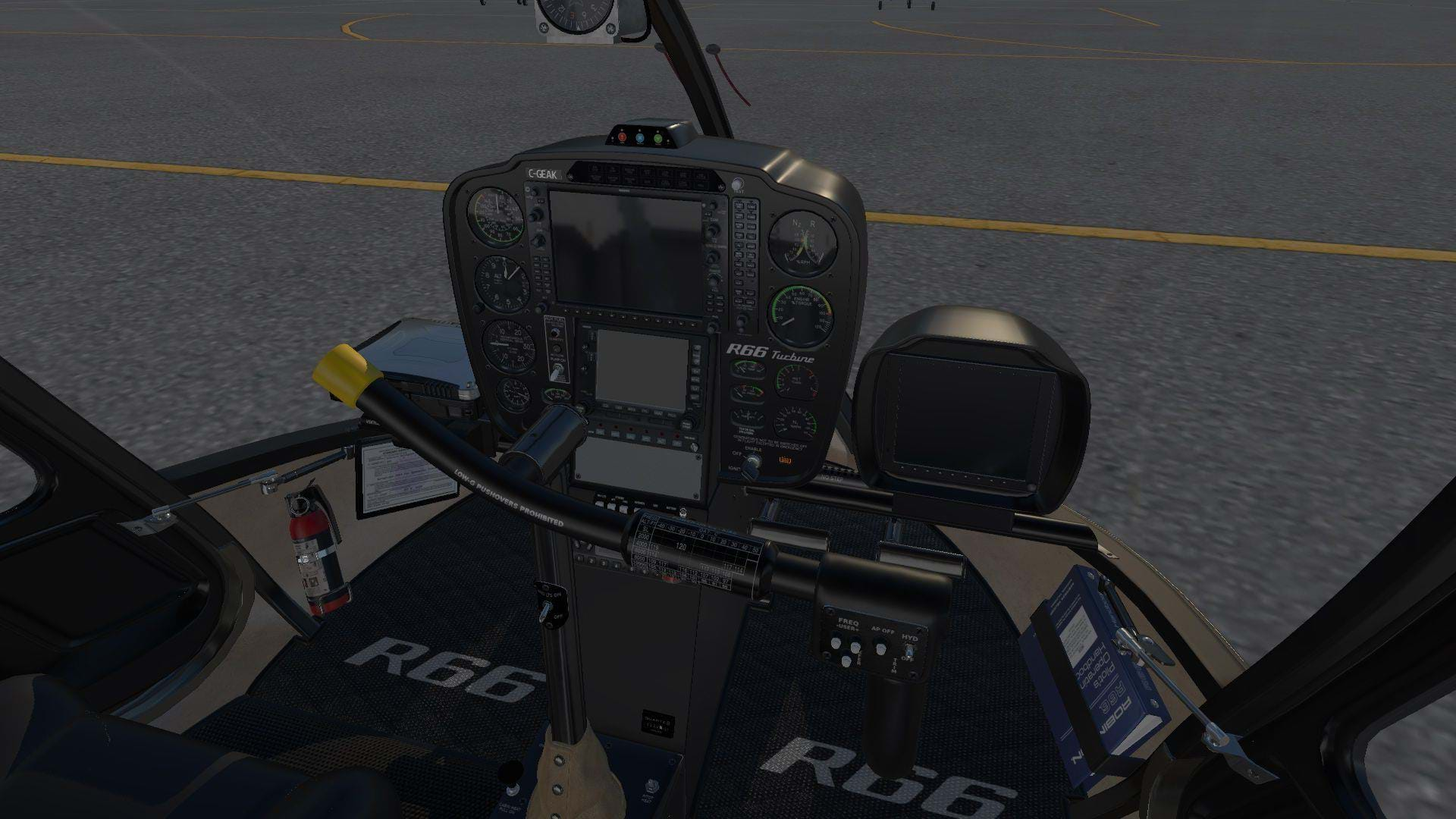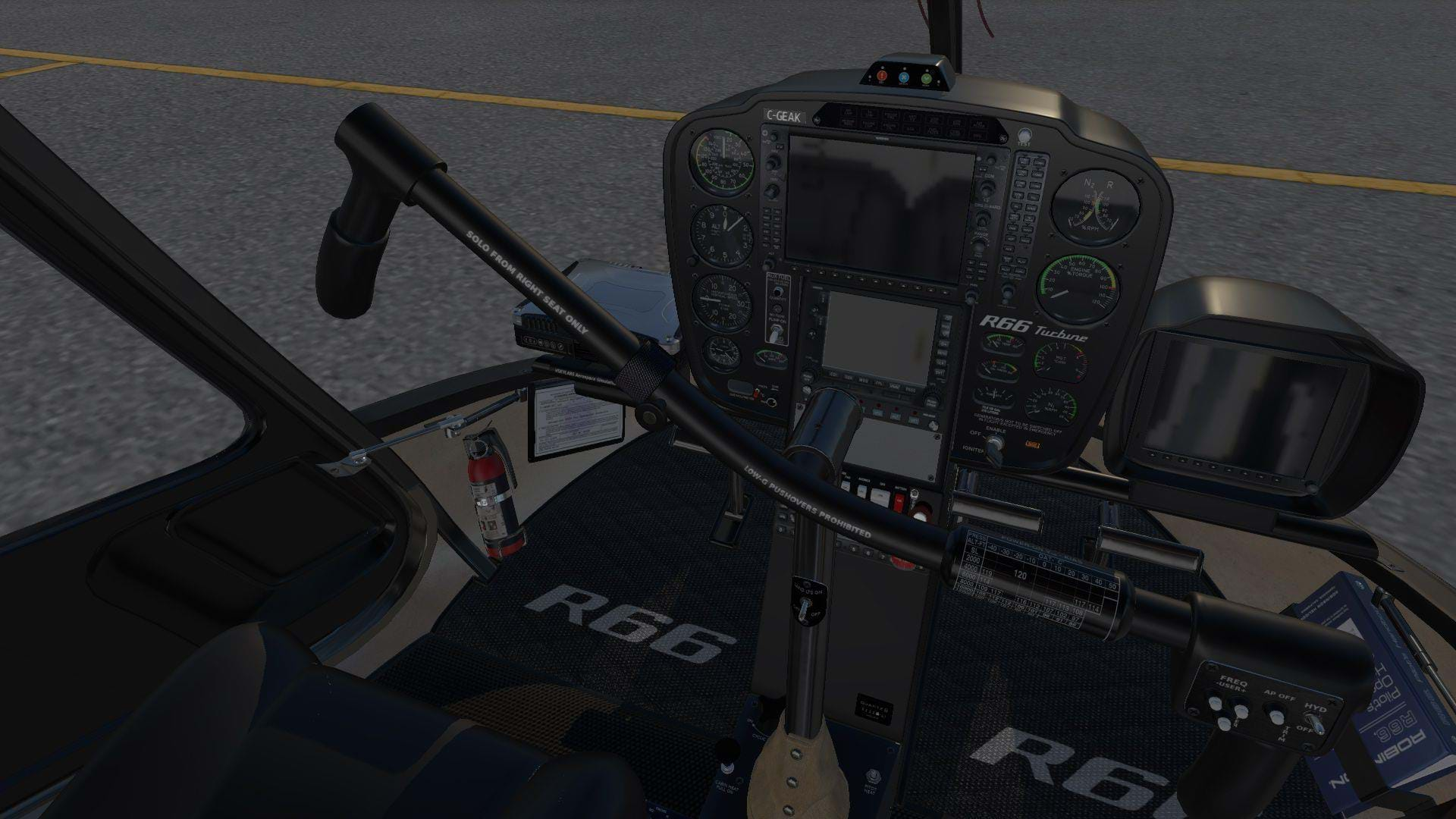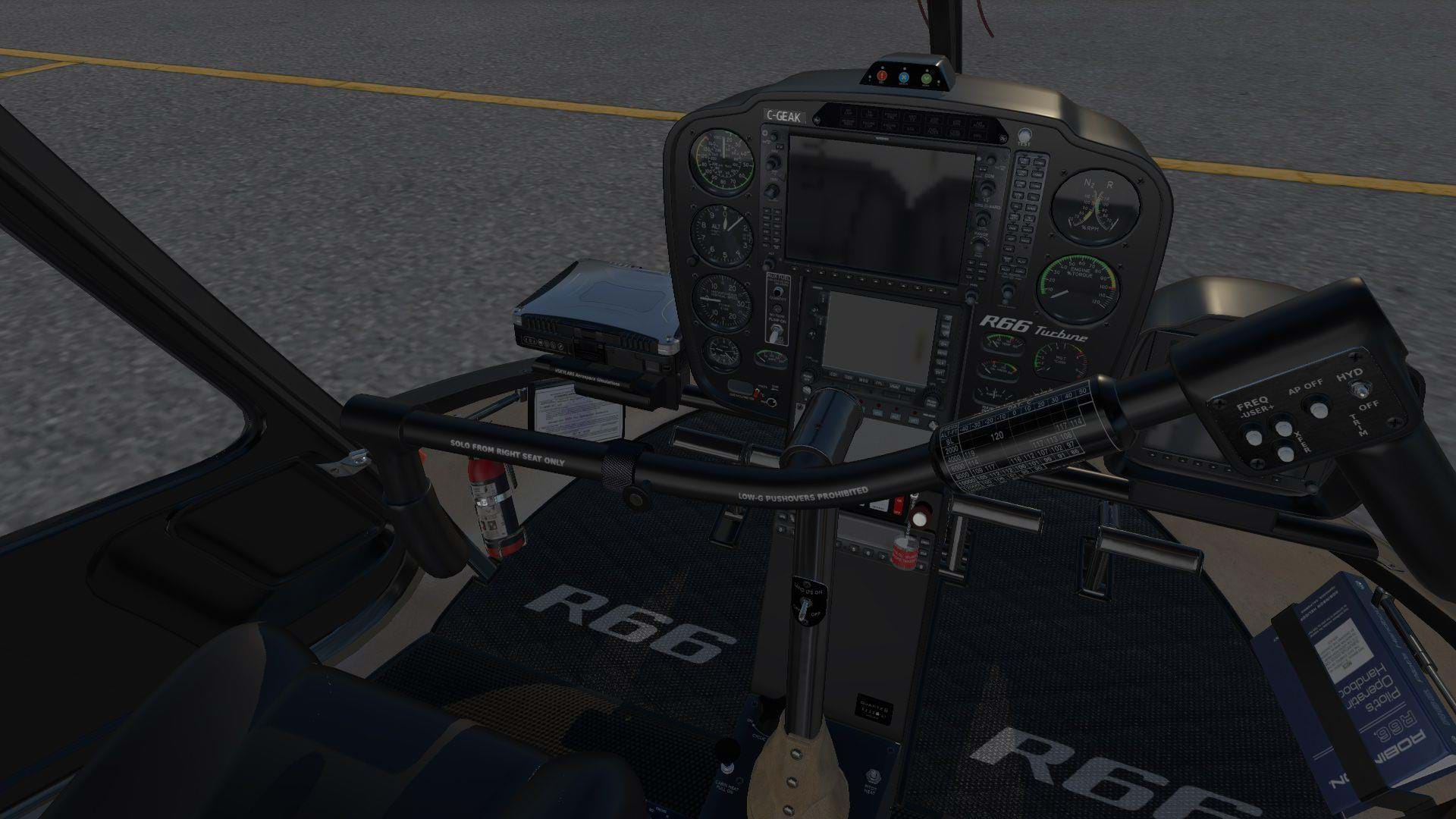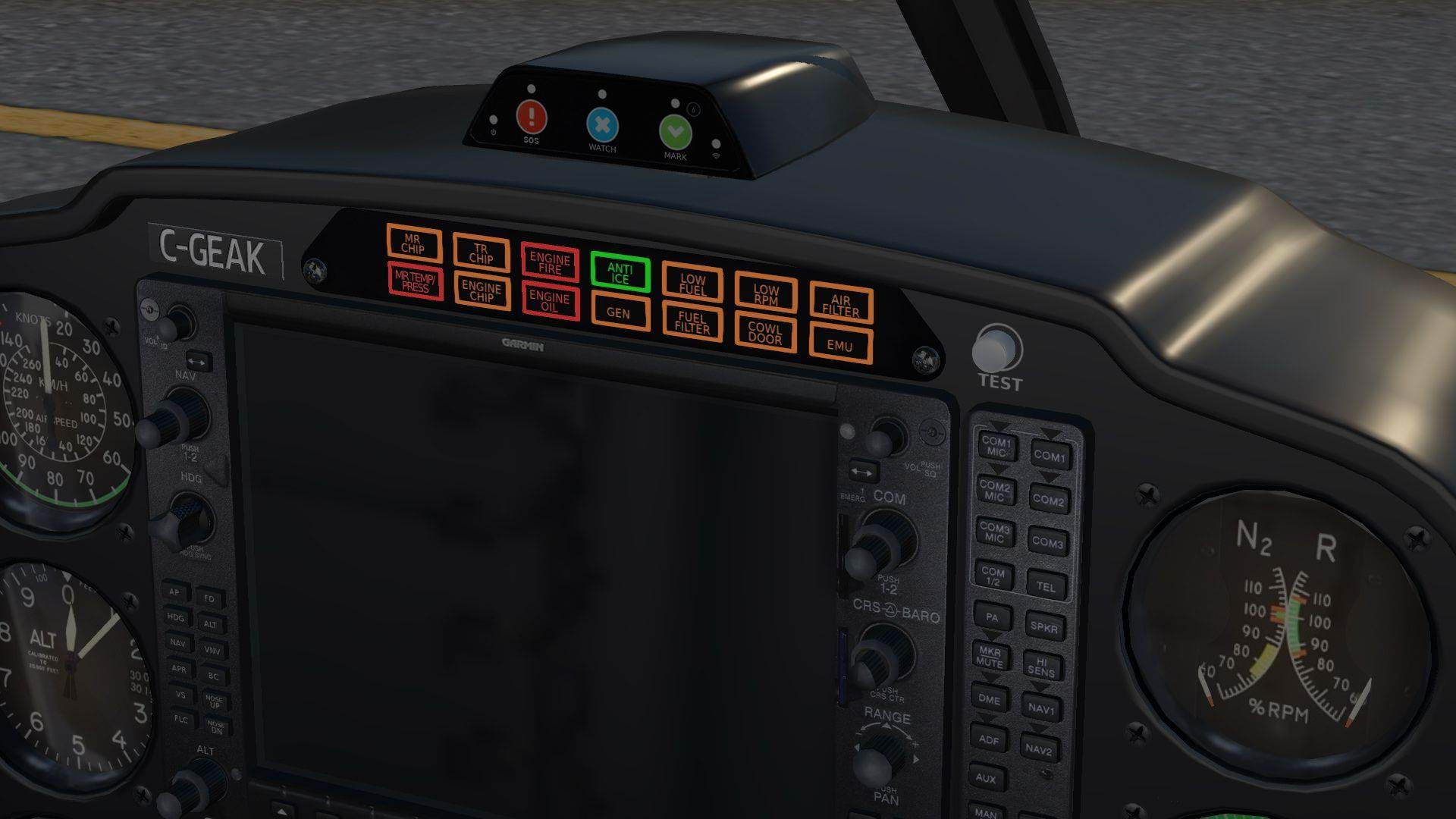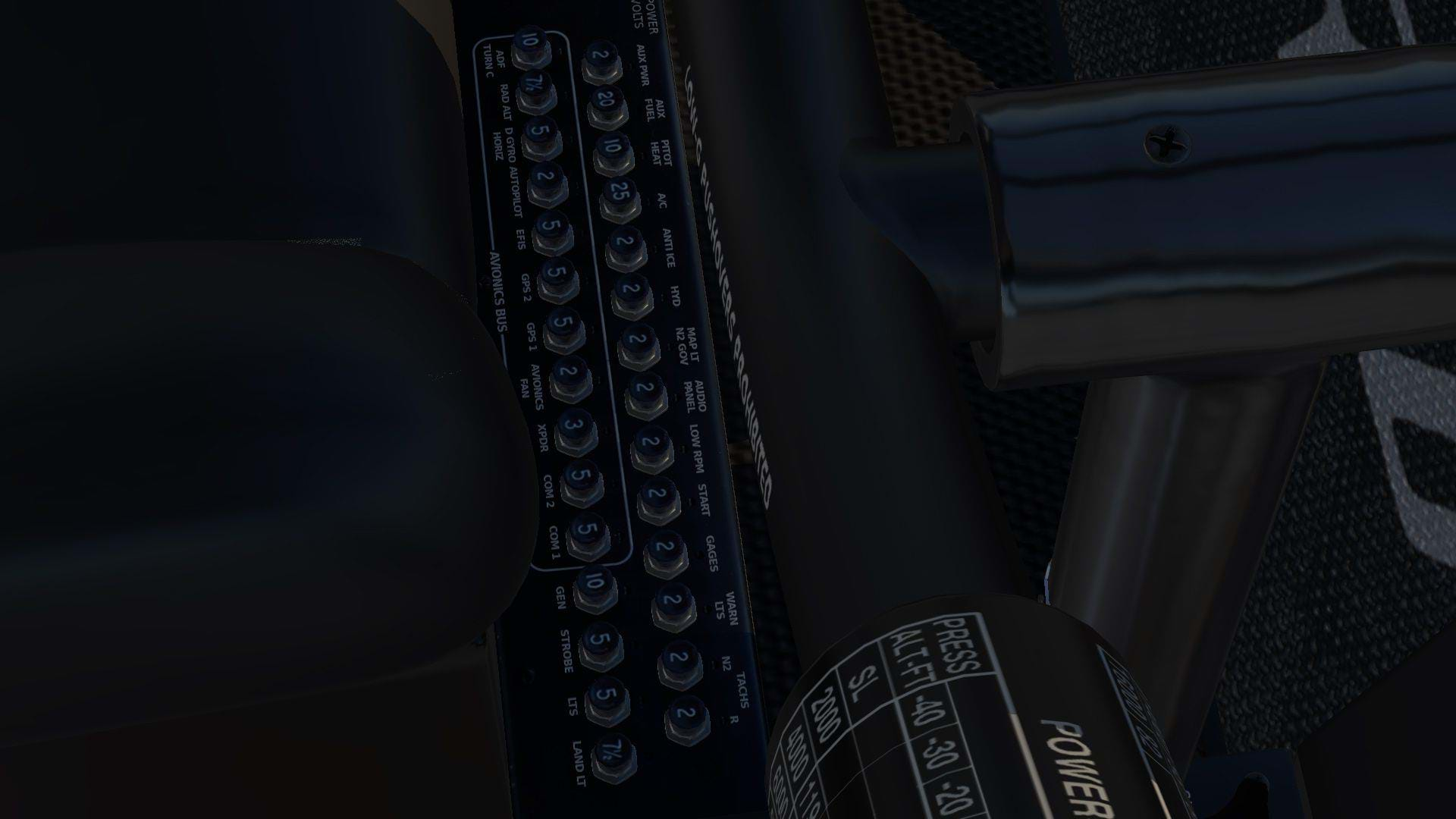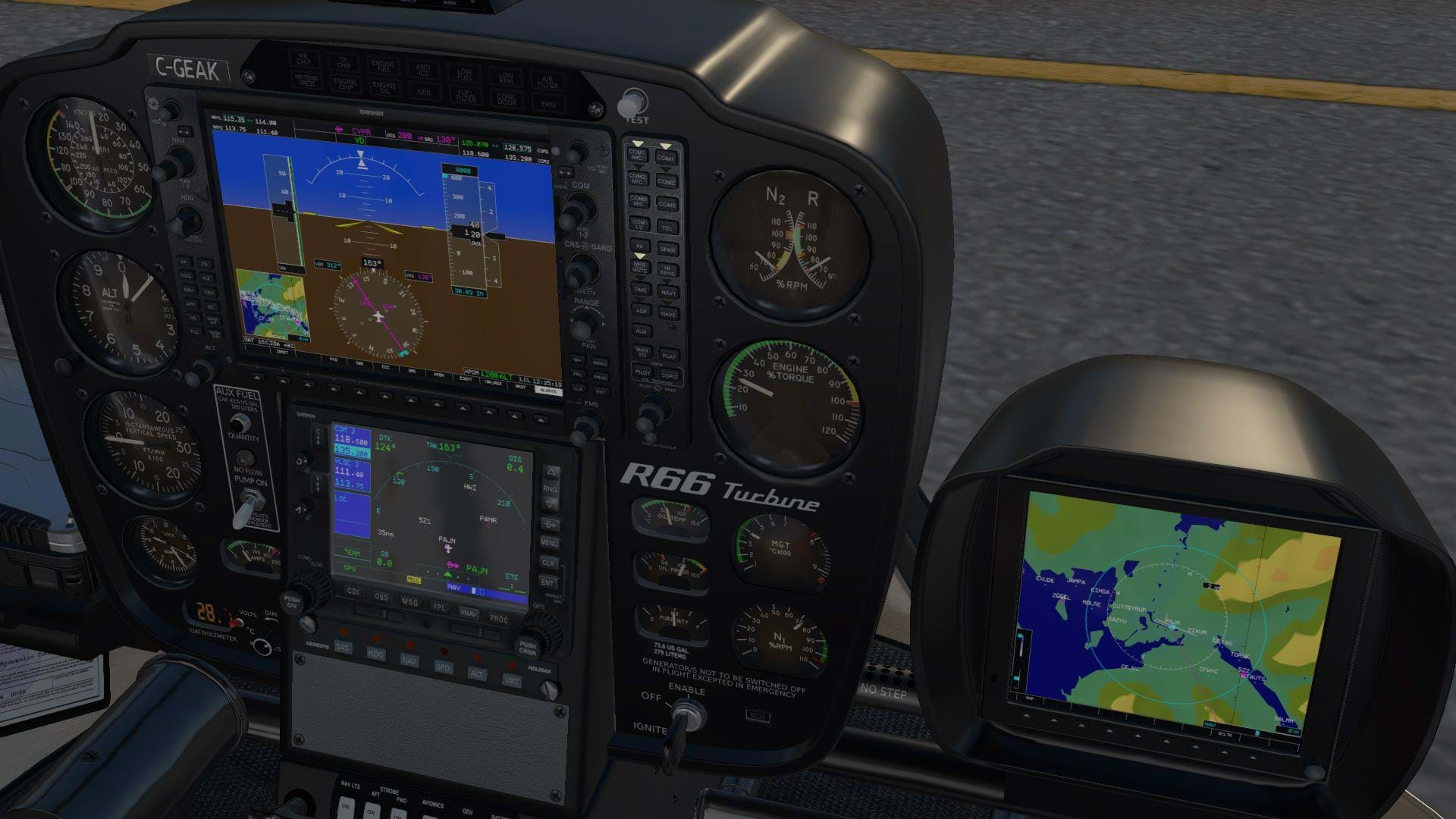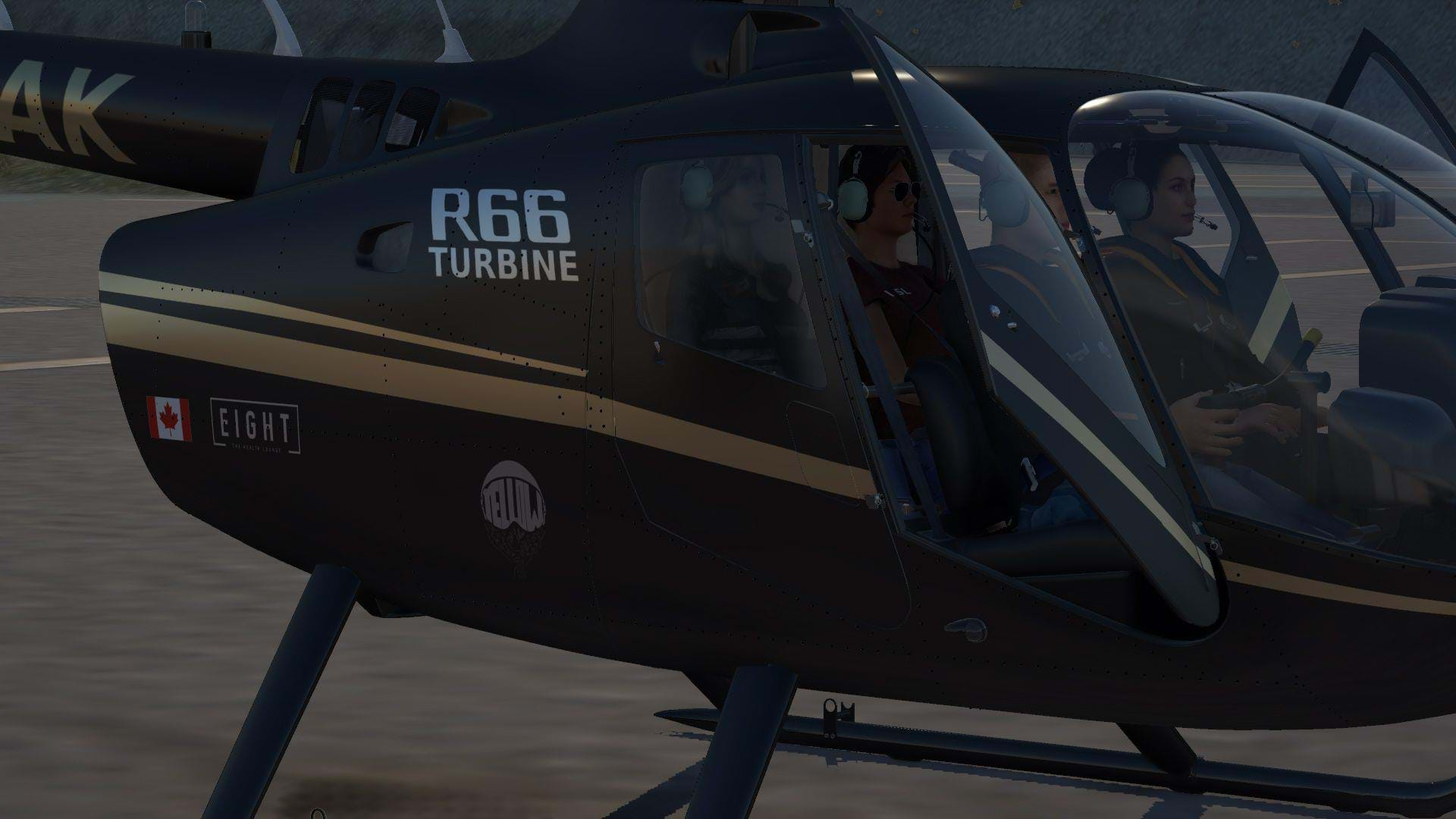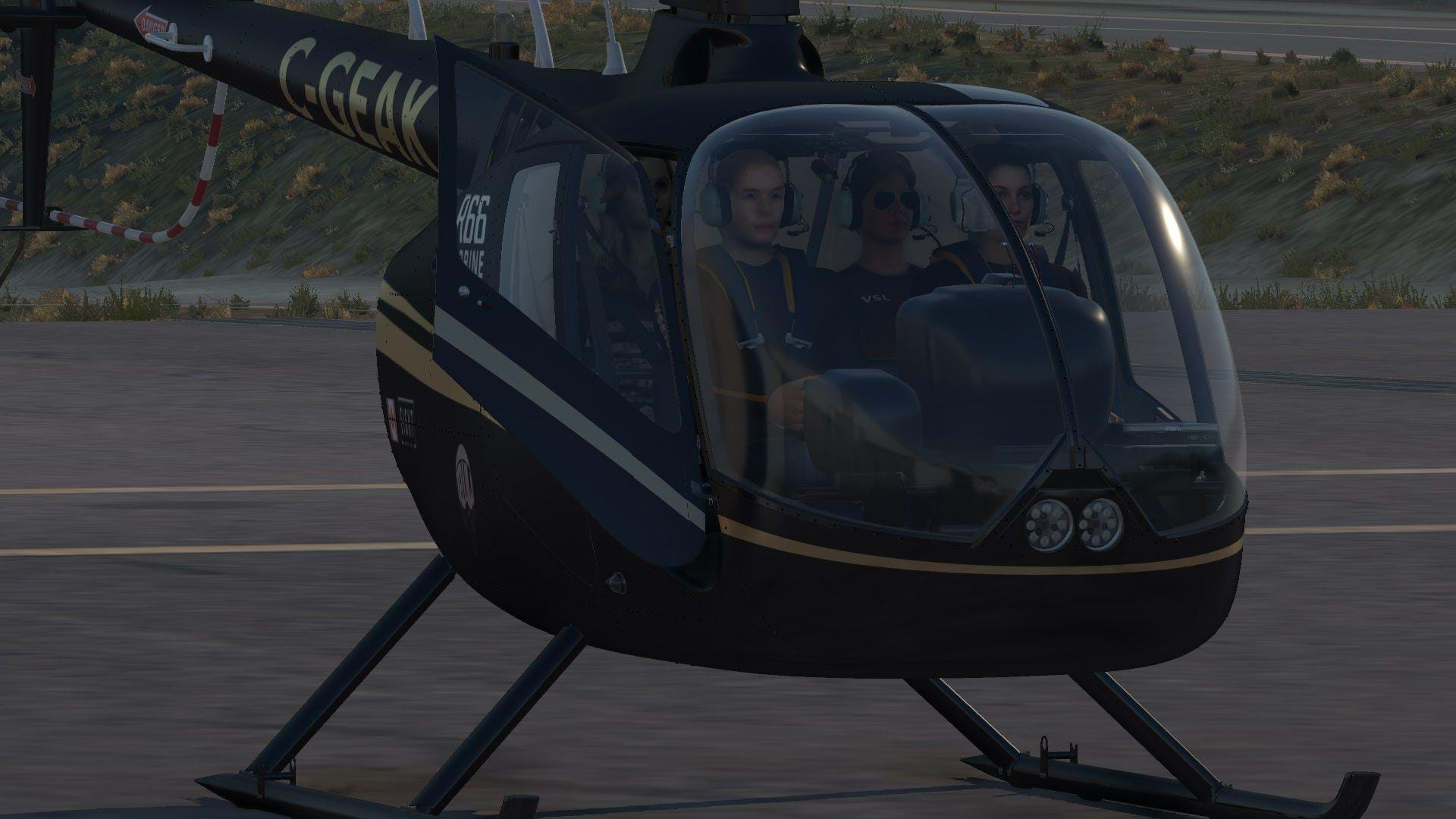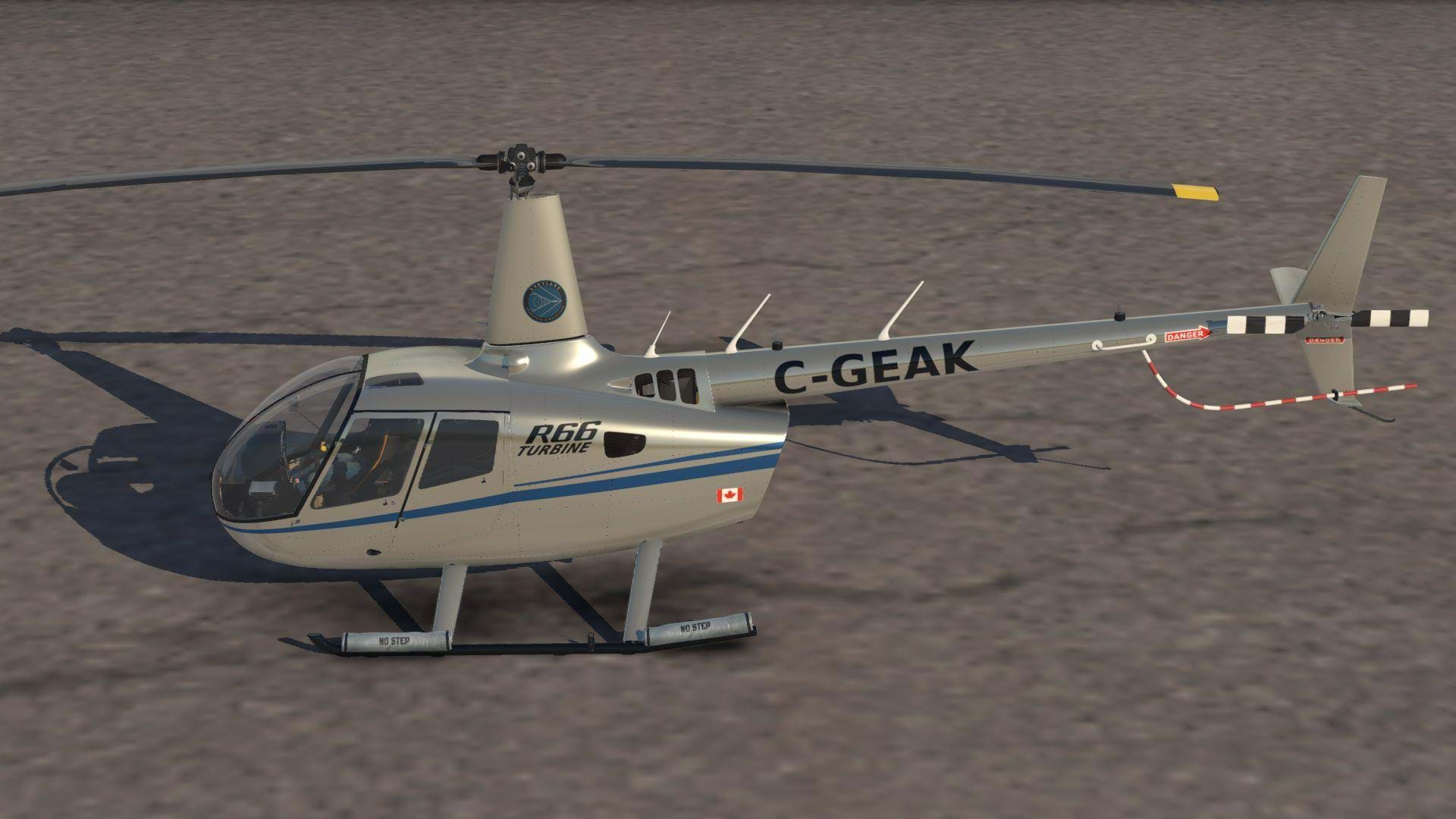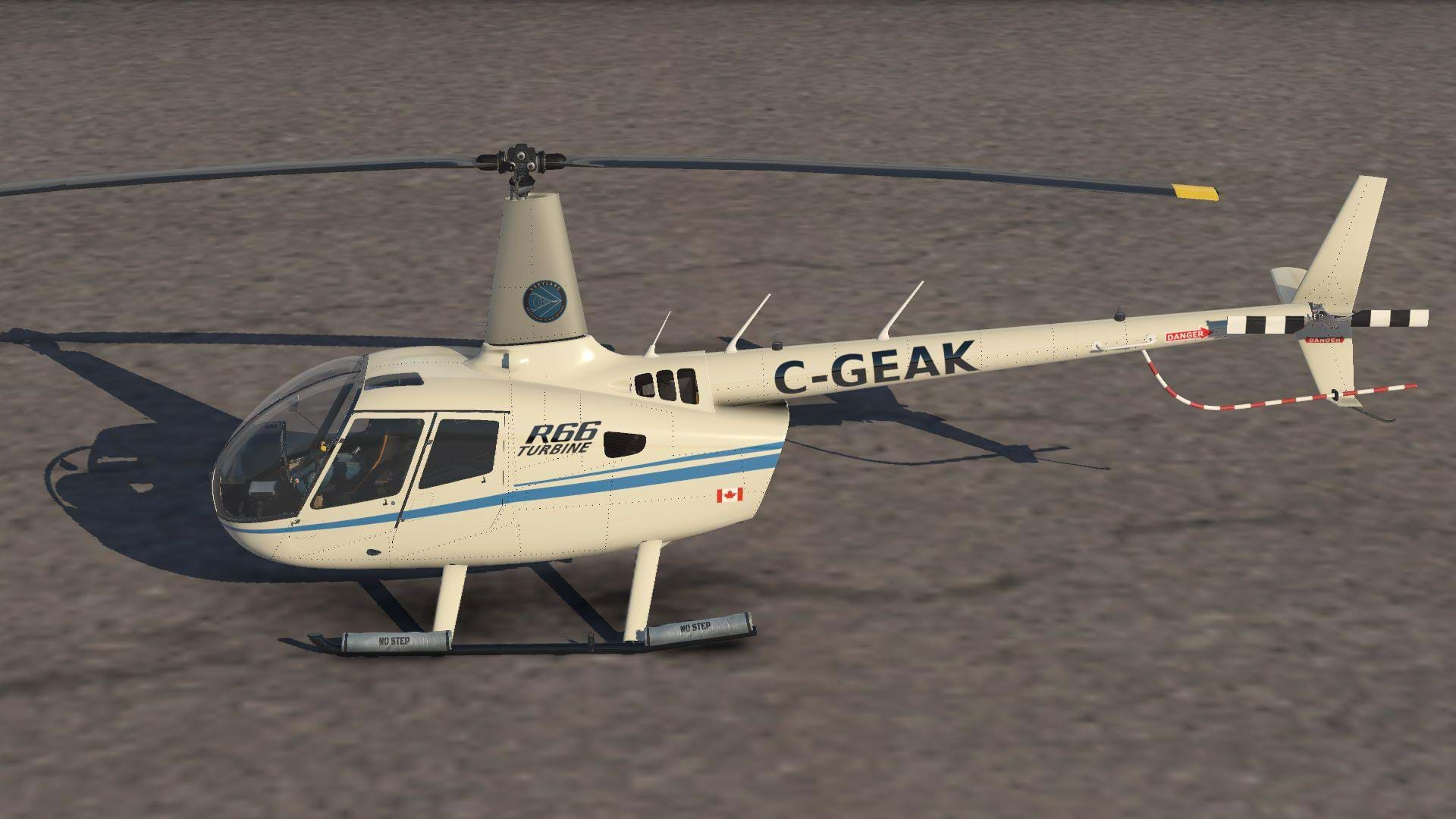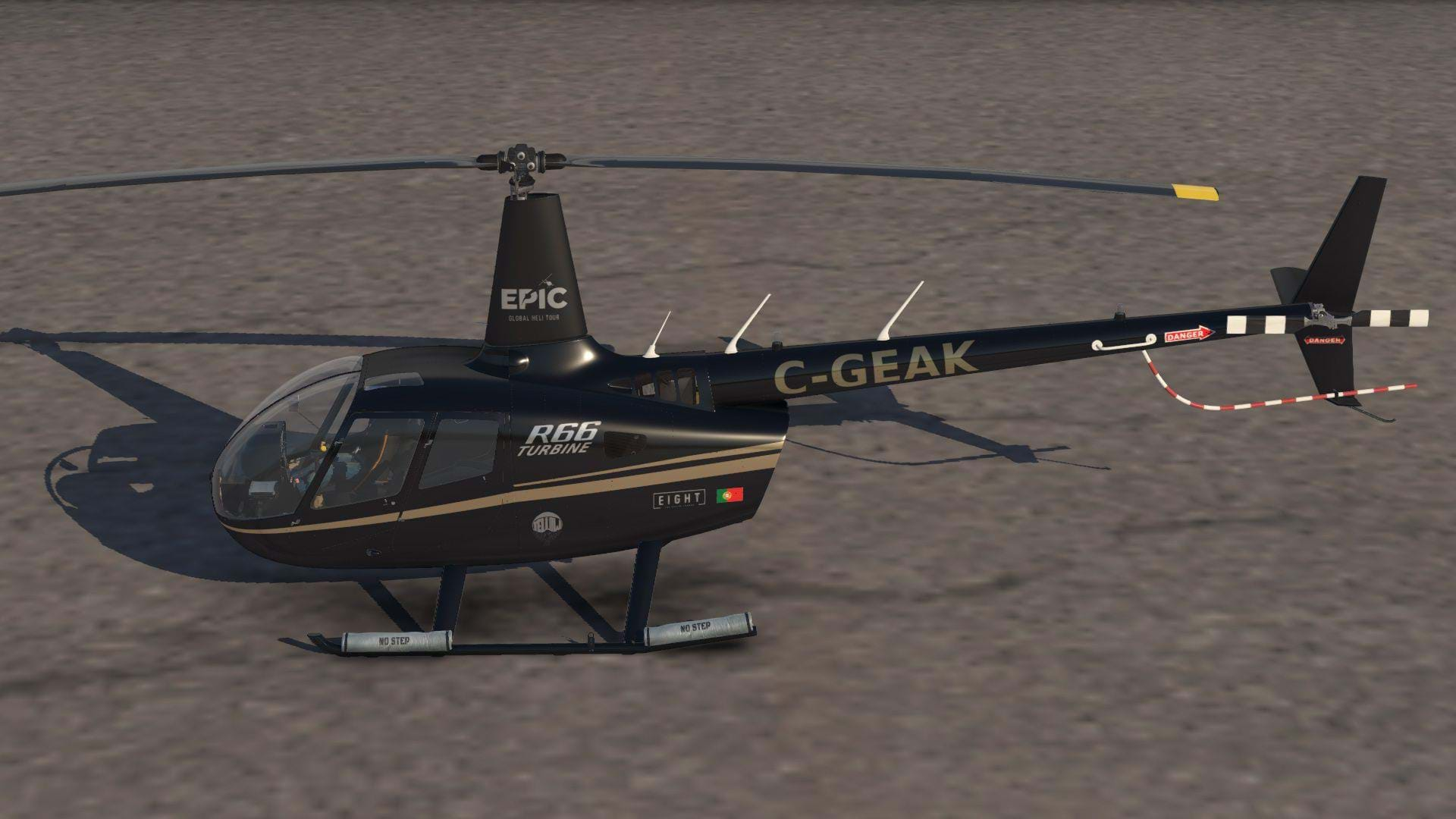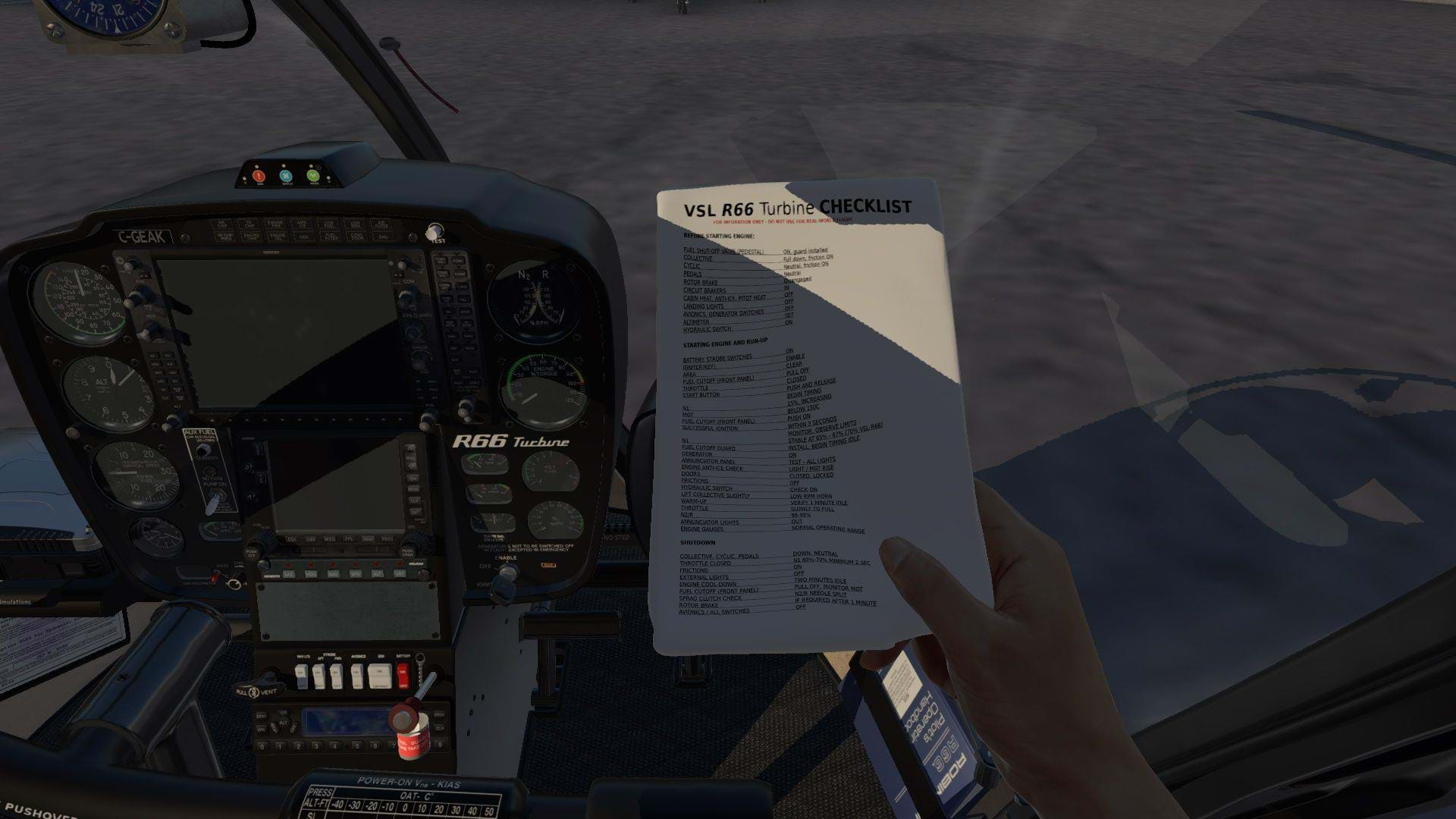Introduction
The R66 has been in production now since 2007. As of the start of 2017, 763 had been produced and it’s turning out to be a popular, safe helicopter.
There are always people who claim that Robinsons, particularly the R44 and R66 are dangerous, however in terms of mechanical reliability they are second to none. In fact, in September 2019, the R66 fleet exceeded 1,000,000 flight hours without a single power failure.
All helicopters deserve respect and need to be operated within their limitations and the Robinson doesn’t suffer fools lightly. Virtually all of the accidents could have been prevented by proper piloting techniques.
The R66 has found favour with tour operators, private owners, law enforcement, TV stations and agricultural operators. A company in NZ had two of the first ones in that country and one of the pilots said they are the best spraying machine since the Bell 206 and in some ways, better.
I wrote a review for Alabeo’s R66 in FSX back in 2016 which detailed the types history and so I shall not repeat that here. Not much has changed since that piece was written.
Suffice to say that the R66 has continued to meet with success. Several ‘66s’ have flown around the world with the most prominent probably being Ruben Dias, Mischa Gelb and Diogo Dias’ effort. Robinsons first turbine looks to be setup for a long and happy production.
VSKYLABS R66
VSKYLABS (hereafter known as VSL) are nothing if not prolific. Their stable of helicopters contains some very odd machines from the Gyro (really good fun) to the Cabri, Mini 500, Cicaré and now the R66.
This is meant to be the first in a series that will eventually cover the other two Robinson machines, the R22 and the R44. VSLs philosophy of using XPs default systems and dynamics may not appeal to some but in terms of making aircraft accessible, it can’t be denied that it doesn’t take too much to learn their aircraft.
VSL have chosen an interesting route in that they chose to represent a very small corner of the R66 fleet currently in service. On the basic factory fitted R66s, the panel and interior aren’t too dissimilar to the R44 and even R22 that came before. VSL’s representation however is that of Dias, Gelb and Dias' Epic Global Heli Tour machine.
This aircraft has a new panel, extra GPS above the pilot’s knees, an auxiliary fuel system and an autopilot. The aircraft is also equipped with air conditioning and floats… But more on that one later. An interesting choice as a vast majority of the aircraft don’t have any of these features. I have it on good authority though that the option for a more standard aircraft will come later.
NOTE: I froze my test program at version 1.05e. VSL are updating this thing all of the time and a line had to be drawn as to where I was going to review it. Most of the things that I mention in this review will probably be fixed over the coming months however, the issues and problems raised in this article are valid as of this version.
Download and Installation
The downloadable file is currently running at around 196mb. Inside the compressed archive is a folder that is simply dropped into the ‘extra aircraft’ folder. Uncompressed, the folder is 314mb so certainly not big. Nice and easy the way it should be.
Model and Textures
VSL produce beautiful renditions of whatever aircraft they’re working on at that time and the 66 is no exception.
The model is clean, crisp and pretty accurate. Everything is where it’s supposed to be and it’s certainly a more accurate rendition than Alabeos one. A few things to note on this one. The pitot head on the mast is the optional heated version and this is modelled correctly. The model loads with the floats visible, however, these are eye candy only at this time and are non-functional.
There is a click spot on the toe of the skid when viewed from the inside to hide the floats and the longer skid tubes as well as a key binding. It would be nice for them to be hidden by default given that they are non-functional.
The pilot model is the same that VSL have used for all of their helicopters so far and to be honest, they need to rethink this. The pilot is modelled with a four-point harness and it is just plonked onto the seat that already has three-point seatbelts modelled…
It just looks a bit messy. In addition, the pilot can’t be removed. Not a huge issue but it would be nice to be able to do that.
All of the moving parts are animated and moving any of the flight controls moves the corresponding control rods and surfaces. Unfortunately, the tail gearbox and associated parts look a bit unfinished.
It’s not a big thing but if you’re going to go to the effort of modelling all of that, it would be nice to do it really well.
The bigger issue than the above however is the rotor head modelling. The swashplates move however where the drive links mount to the mast is like a movable cuff… In reality the drive links have two points of movement so the mounting to the mast is fixed.
It’s a strange error to make and one of the first things I picked up. Of course, it’s not something that you’d notice unless you moved the controls around while viewing the head from the outside but still…
The R66 differs from the R44 in that it has an internal baggage compartment, however this is not present at all on the model; I would’ve expected it to be. The model represented has the auxiliary fuel system and the tank is located in the ‘boot’ and this might explain why.
The external textures are pretty good with just the right amount of shine present. The external textures do look a little fuzzy up close and the rivets seem to be separate from the rest of the texture.
Along with the modelling of the tail gearbox, the texturing as shown in the above pic isn’t really good either. For some reason, the blade texturing also feels a little bit unfinished. There isn’t really anything that I can put my finger on, but it just lacks something. The mesh grills are 2D as one would expect.
Moving inside, you can tell that there has been a lot of work put into this.
As mentioned before, VSL has chosen only to model a very specific series of features on this aircraft so the panel and equipment represent only the upper level of what can be fitted to the aircraft. There is a laptop on the left side that houses the Avitab plugin if installed.
One of the things they have done that I REALLY like on the interior is the ability to remove or install the dual controls with a simple click spot. I really wish that more developers would do this. Although the pedals don’t get removed and there isn’t a collective installed when the cyclic is. The cyclic can be teetered also if you wish to fly it from the left seat (not supposed to do that solo). However, the doors cannot be removed at all… a strange choice.
Looking into the back seats, the rotor brake is hanging down in the engaged position by default and all of the headsets are hanging up on their pegs. I mentioned before that the pilot model wasn’t able to be removed, well changing the payload weight within the sim will add or subtract passenger models from the seats.
The models are well made and textured however they aren’t visible when looking around the interior. This is quite disappointing as it really kills the immersion. I know that sort of thing can be a frame rate killer but a number of other addons manage without bringing the sim to its knees. In addition, there is no pax model for the middle seat that is present in the R66.
The placards for Power On and Power Off VNE is on a roller attached to the T Bar on the cyclic as in the real thing. The trouble is that the numbers are wrong. The Power On VNE for the machine is 140kts at sea level, however, the placards list it as 120kts dropping off for altitude and temperature. Not sure where those numbers came from.
Because of VSL’s modelling only this rather limited selection of aircraft, the number of paint schemes available out of the box is also quite limited. Only three and all the same Canadian registration. Thankfully the community has already gone to work on this.
This particular R66 model is quite good. Much better than the prior effort by Alabeo. It is not without its problems as mentioned and I hope that these will get fixed up over next little while. I do think that the pilot and passenger modelling method could do with a second look though.
Systems
The R66 is a very simple helicopter. Robinson designed the 66 to be simple and cost effective to operate. They chose the RR300, an engine that has a proven lineage in the Model 250 series, which is mounted in much the same way as the Hughes 500.
The aircraft has a single hydraulic system the same as the R44 and in order to make the aircraft easier to operate and avoid hot starts, Robinson installed a caged starter so that the pilot doesn’t need to hold the button down during the sequence.
However, it seems that a lot of sim and real pilots don’t understand turbine engines. The starter needs to be motored throughout the start sequence to pull air through the compressor in order to provide a good ratio with the fuel.
There also needs to be sufficient flow of air through the compressor and turbine to remove the combustion gasses to avoid it getting too hot. The way that the R66 works is that the pilot hits the start button once and when the N1 reaches a certain percentage (around 15%) fuel is injected via the red fuel handle on the panel. The only thing the pilot needs to do at this point is to monitor the MGT and if it gets too hot, to pull the fuel handle back out. The starter will stay engaged until the engine is self-sustaining (58% N1) or until the MGT is below 150 in an aborted start.
The VSL R66 follows the start sequence almost exactly. The rotor brake needs to be off, this inhibits the starter and the ignitor key (much the same as a 500) needs to be on. If you are using controllers, whatever switch or button you use needs to be mapped to the ‘APU Generator’ command.
Hitting the starter brings N1 up and there is a little squeak in the sounds to indicate where to introduce fuel. If you’ve injected fuel at the right time, there is almost no chance of a hot start.
Once in the start sequence, it’s very linear in that nothing differs start to start and I feel that it all gets up and running too quickly.
There is an avionics master which you bring in after the start and brings the non-essential bus on the line. VSL have chosen to use the XP default G1000 instead of the R66s Garmin dual touch screen unit.
This provides a few problems in that the information presented on sections of the screen is nonsensical for the R66. The G1000 also doesn’t have the synthetic vision of the actual Garmin unit. I find that there is far too much in the way of buttons and rotary knobs and unless you’re in VR, you’re too far away to make use of them. There is also the standard Garmin 750 unit installed below and an unknown, although quite useful, GPS unit mounted over the pilot’s legs.
In keeping with the type of R66 being modelled, there is also an autopilot unit which VSL say themselves is experimental. There is what’s labelled as ‘SAS’ although it really is just a ‘wing leveller’ and then the usual smattering of auto pilot features.
I haven’t played with it much, but it does seem to work quite effectively. Also, worth noting, is that the only disconnect button is on the cyclic itself. As far as autopilots in helicopters go, it’s actually quite effective. It’s not exactly like the real thing but it does work.
VSL have gone out of their way to model the circuit breaker panel in front of the left-hand seat. All of these can be linked to key commands which to be honest, seems completely over the top and unnecessary.
In addition, I only tried a few of the circuit breakers and they don’t isolate the systems they’re supposed to anyway. For example, the engine and rotor tach CBs don’t kill either of those two things. Not sure if that’s intentional or not.
Little things like the Pitot Heat switch activate the light and the engine anti ice does produce a slight rise in MGT.
There is a rotor brake light on the panel next to the ignitor key and for some reason, I guess it just slipped through the cracks, the light is on even with the power off.
One of the biggest problems that I have with the systems on this bird is the turbine governor. Turbine governors don’t start working until the throttle is all the way open however VSL have modelled this so that it kicks in like a piston engine governor. The real trouble with this is that it takes over as you’re bringing the power in and it produces this insane torque spike that would do serious damage to the engine in real life.
The auxiliary fuel system is modelled with an extra panel that has a button to read the aux contents on the main gauge, light and switch. The system only transfers fuel into the main tank and when the switch is on and doesn’t cross feed by itself. The light will illuminate when there is no fuel pressure in the aux tank. The system is well modelled and pretty accurate.
All in all, it a pretty good stab at modelling the Robinson’s systems, I really do hope that this stuff will continue to be tweaked and improved, particularly little things like the CBs working, rotor brake light and the big thing of the governor.
Score: 7.5/10
Sounds
Unfortunately, this R66 suffers from some of the same sound issues as Alabeo’s one. A lot of the items in the cockpit don’t have unique sounds, in particular the doors. It never ceases to amaze me how many developers forget about having door sounds.
Thankfully, the electrical system seems to have pretty decent sounds. You can hear the avionics fans and gyros wind up and vice versa when you take power away.
The start sound is a bit confusing, it’s pretty good but I don’t know if it was actually recorded from a 66 or not. It seems very quiet, which the R66 is, compared to some things, but there isn’t enough of the right noise in the mix.
No ‘groan’ when you have light off during startup is the big thing that I noticed. When everything is up and running it’s pretty good but again, the mix needs to be played with a little I think, there isn’t enough bass and the blade slap isn’t anywhere near pronounced enough I don’t think. Again, I hope this gets worked on.
Honestly the sounds aren’t that bad at all, I just think they need a little tweaking to get the levels right and some more ambient cockpit sounds would be nice too.
Flight Dynamics
The meat and gravy of any addon is obviously how it flies. An addon can be pretty and have cool features but if it flies like a sack of spuds then it isn’t much good to anyone. As I have said many times before, helicopter flight dynamics aren’t easy to get right even in XP and speaking from experience, there needs to be a lot of testing done in the alpha a beta phase to get an addon to the point where it’s ready for release.
The Robinson series have some of the best tail rotors in the business and the R66 is no exception. Picking VSL’s one up into the hover doesn’t require much, particularly if it’s light and this is to be expected although I would expect a little more. When you’re a MAUW, it’s a bit better. The power in use in the hover has been an issue since release. The update that I froze on has finally tackled this to some extent. My yardstick for measuring how much power it should be using is that I acted as self-loading ballast for an AUW check in a 66 once upon a time. At sea level, 20 degrees, pilot and three pax, we were hovering at 70% torque. I replicated these conditions in the sim and it was a little less than 70% so not terrible overall.
One of the biggest issues that I have right now with this is the stability. It really doesn’t feel like a hydraulically boosted two bladed machine at the moment, in fact the freeware Hughes 500 feels less stable than this.
Early builds seemed to have a strange rolling motion when changing attitude in flight, where easing the nose down would produce a roll to the right and going aft on the cyclic would produce a roll to the left, although this seems to have been cured somewhat in the more current iterations.
When empty, the R66 has lots of power available and can easily get to VNE. VSL’s version seems to be a little bit sluggish in this regard. In straight and level flight, you struggle to get over 100kts. Rate of climb is not a problem although cruise climbing is a bit of a struggle. Cruise with three pax and fuel should really be about 100kts at max continuous power. I’m hoping that this gets fixed in an update as it doesn’t allow you to take advantage of one of the R66s biggest assets.
I think that I went through three or four updates before I froze it on this version and the autorotation behaviour has been another huge problem the whole time. Early releases were impossible to auto, an update came out that fixed that (and other things), another update came out to fix something and the auto behaviour is broken again.
In the real R66, the disc has so much inertia, that you snap the throttle closed, wait, and then lower the lever, to do otherwise produces a huge overspeed when lowering the collective. VSL’s version initially had a problem where rolling the throttle off dropped the RPM so quickly that the blades stalled.
In the latest iteration, the RPM is fine but you can’t raise the nose upon entering. When entering auto (or just lowering the collective anywhere) the nose drops due to the advancing blade’s lift decreasing by a mathematical square function (conversely the nose pitches up when raising the collective due to the advancing blade producing a lot more lift), in VSLs version, you are unable to bring the nose up and you just end up diving into the ground.
The tail rotor authority is fine within the limits of the XP engine. I was unable to put the helicopter in a position where I needed to go full deflection to stop the aircraft even at altitude. On that note, the altitude performance is about what I’d expect, and I was able to conduct landings up at 6000ft with a bit of weight on without too many problems.
People seem to judge models on whether they can enter VRS (vortex ring state) or not. I can confirm that as usual, the R66 drops into that condition far easier than in real life.
Overall, the aircraft is too stable, too slow and a bit unpredictable in some aspects. However, in some areas of performance, it is quite close to the real thing. I hope this gets worked on some more.
Miscelaneous
Documentation
VSL provides a rather comprehensive manual covering all aspects of this add-on. This includes links to the real R66 Rotorcraft Flight Manual. The manual is well written with lots of visual illustrations. Due to the fact that people don’t read this at all, VSL recently released a much smaller document that tells you how to setup and start the aircraft. Say what you want about VSL, they listen to the community.
Vibration Modelling
Two bladed helicopters move around a due to the fact that the blades are 180 degrees apart. A lot of them have a very pronounced hop at certain RPM. VSL have tried to replicate this by making the cyclic and the compass on the canopy bow move. In flight, this effect is very good however at low RPM as in startup and shutdown, the effect runs into trouble. It appears that the vibration is linked to the position of one blade or something like that. The movement of the compass and cyclic is a bit off. Impossible to describe but when you look at it in the sim, you’ll see it.
Checklist
Clicking on the Rotorcraft Flight Manual in the cockpit brings up a sort of ‘start card’ taken straight from the flight manual. This is complete with the hand holding it. Viewing it from the outside is kind of odd though as there is a hand floating in mid-air…
Heat Haze
For some reason there is no heat haze effect out of the exhaust on this model. I’m sure it’ll get added at some stage though.
In Summary
VSL can produce great add-ons, of that there is no doubt. One thing that perplexes me though is that this addon clearly was suffering from a lack of testing when it was initially released to the world. I like being a test pilot but it isn’t for everyone and the customers shouldn’t really be expected to test the product for the developer.
The list of issues that I have pointed out here were noticed within 30 mins of flying so I didn’t have to go very far to find them. A proper test program is needed for the future.
Despite the little peculiarities with this particular aircraft, it is a good representation of the real thing and will get better as long as the updates fix the bigger of the issues. I do enjoy flying this machine and it is only going to get better.

